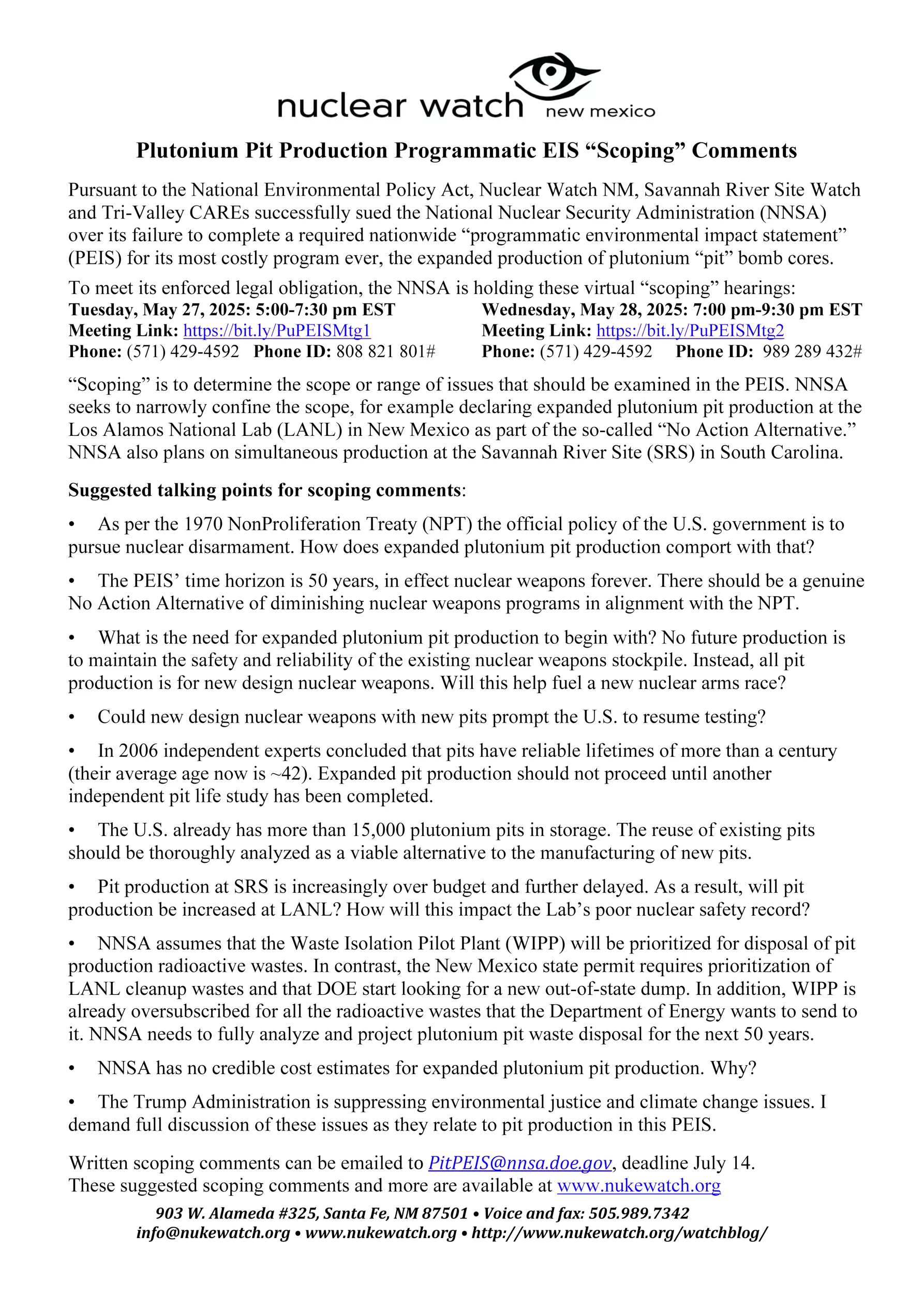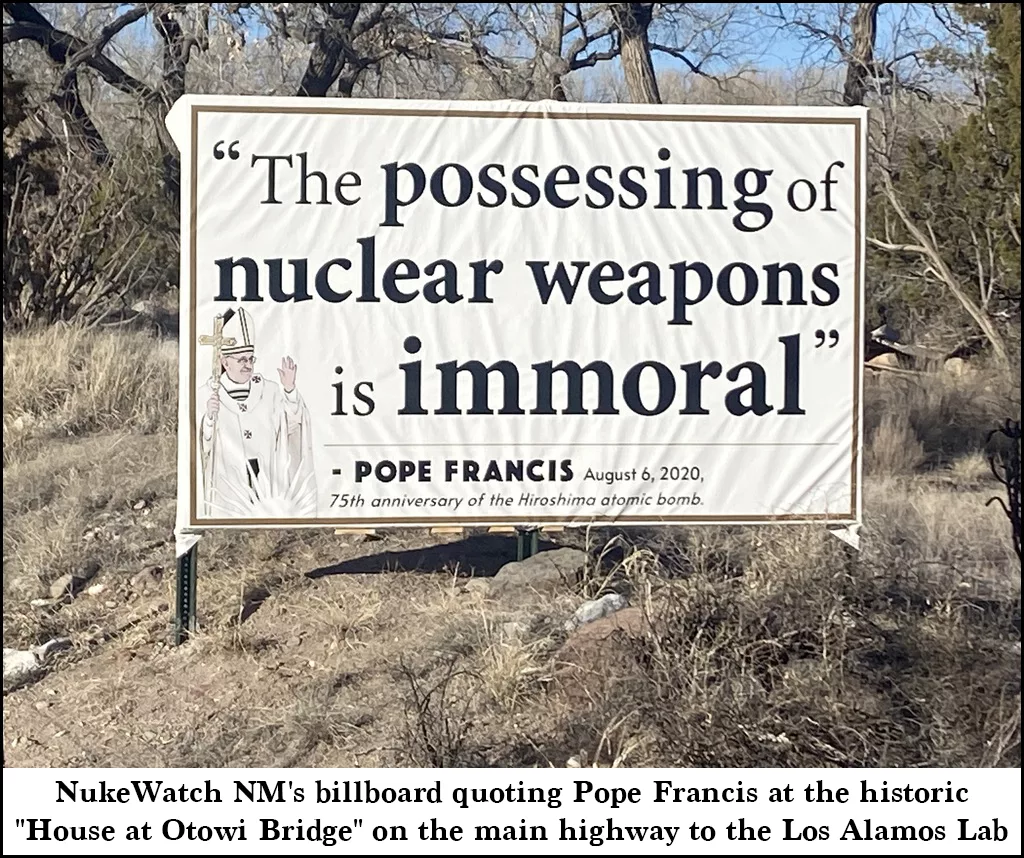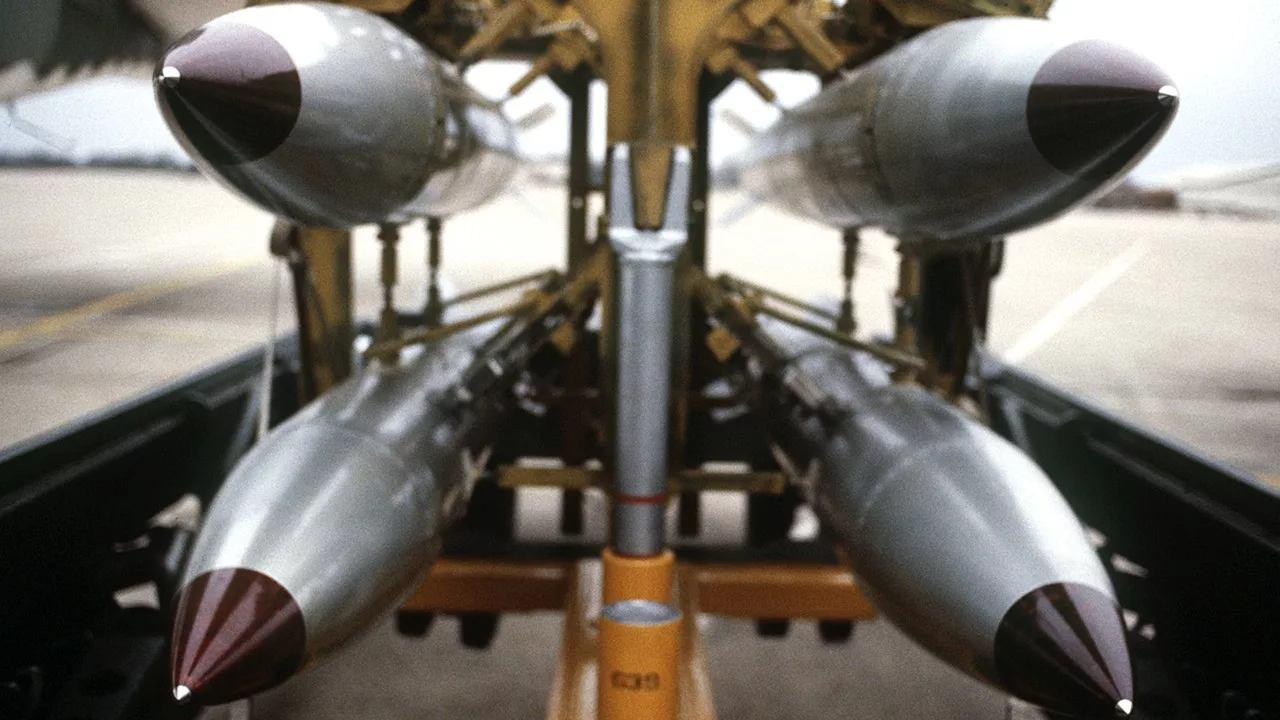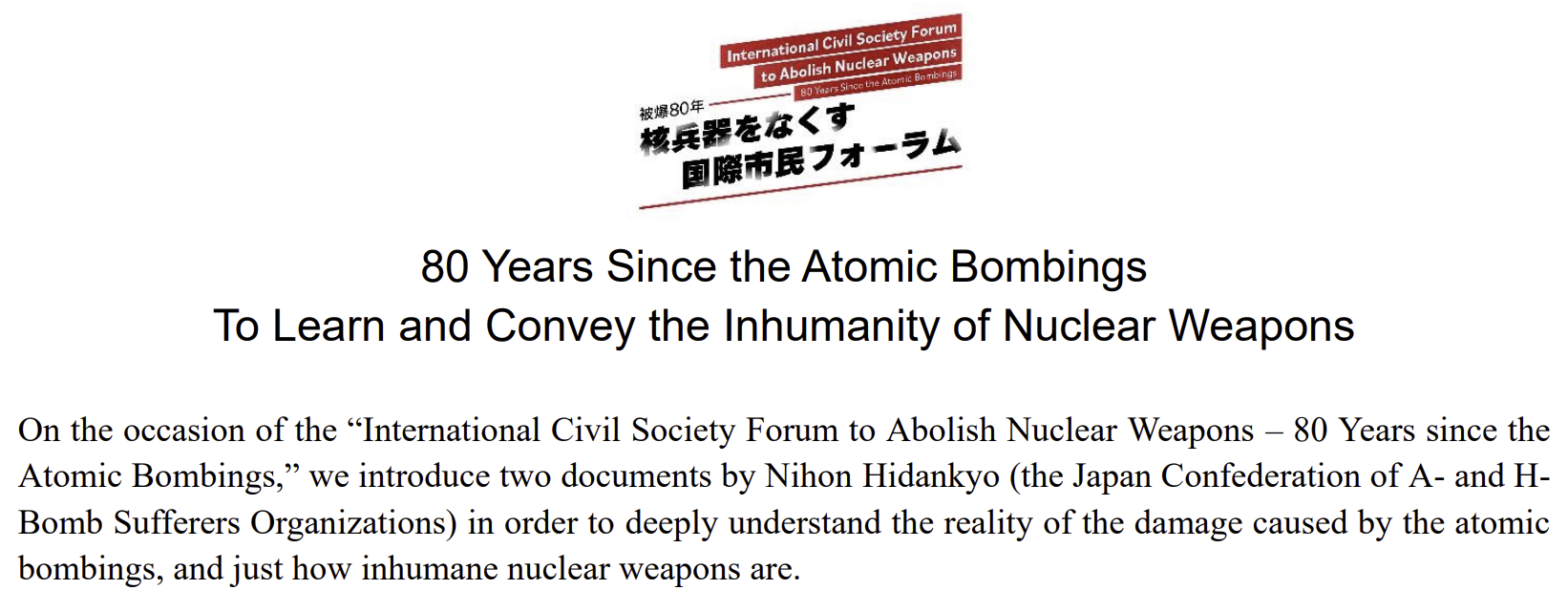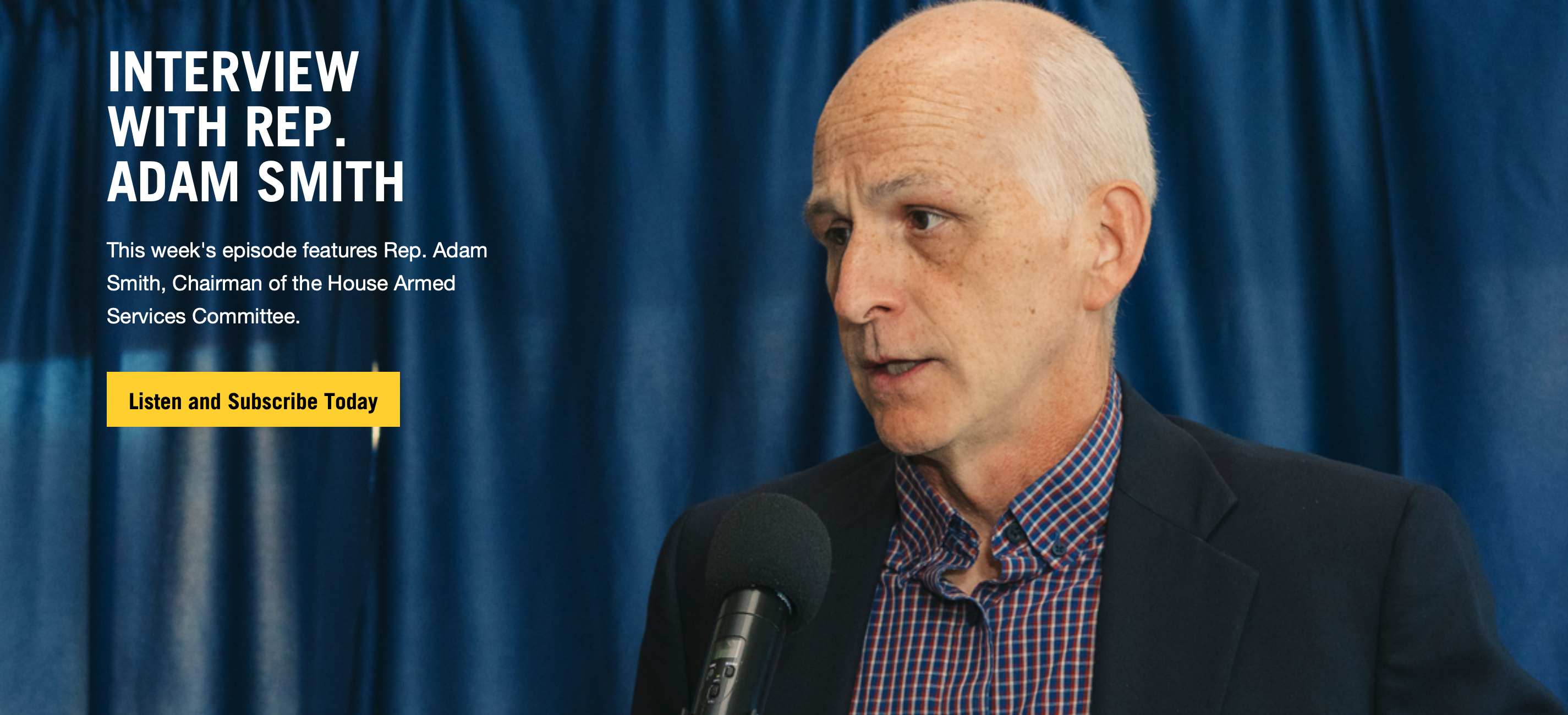Full Recording: Second Scoping Hearing for NNSA’s Programmatic Environmental Impact Statement on Plutonium Pit Production
Operation Crossroads: “The World’s First Nuclear Disaster”
“With Trump back in office, the recurring question of the need for nuclear weapons testing has resurfaced in the national security debate. Project 2025’s directive that the US return to ‘immediate test readiness’ raises further alarm, given the primacy of that document in Trump’s circle. The general uncertainty around current U.S. nuclear posture gives added weight to the historical importance of the atmospheric and underwater nuclear weapons tests conducted on the Bikini Atoll, recounted here by one of the leading advocates for public safety in the nuclear age. —Ed.”
By Robert Alvarez | Washington Spectator, National Security | May 29, 2025, washingtonspectator.com
Beginning in the late 1970’s, I was working for the Environmental Policy Institute around the time when atomic veterans started to descend on the nation’s capital. I would arrange meetings with Congressional offices, and the offices of both the Defense Nuclear Agency and Veterans Affairs, to enable the veterans to share their experiences and seek justice for being sent in harm’s way. About 250,000 soldiers, sailors, Marines, Coast Guard men, and airmen took part in atmospheric nuclear weapons tests from 1945 to 1963.
John Smitherman and Anthony Guarisco were 17- and 18-year-old sailors, respectively, in July of 1946, when they took part in “Operation Crossroads”—the first two nuclear weapons tests following World War II. These tests were conducted on the Bikini Atoll of the Marshall Islands and codenamed “Able” and “Baker.”
As a result of this extraordinary indifference to lethal danger, some 200 U.S. Navy ships were contaminated, and ships carrying radioactive fallout subsequently sailed to home ports in California. These ports are still being cleaned up today, nearly 80 years later. Glenn Seaborg, the chairman of the Atomic Energy Commission from 1961 to 1971, described the Baker test as “the world’s first nuclear disaster.”
Anthony and John were part of the U.S. Navy’s Pacific fleet involving 40,000 service men and 2,000 civilians. They along with others swam in the heavily contaminated Bikini Lagoon. When I met them in 1980, John was suffering from lymphatic cancer and Anthony from a severe form of spinal arthritis.
In March 1983, Anthony and his wife Mary showed up at my cluttered office and ceremoniously handed me a large stack of documents. They had just visited the UCLA library in Los Angeles and found boxes of forgotten, declassified documents belonging to Dr. Stafford Warren, the chief safety officer during both the Manhattan Project and the 1946 Crossroads tests.
Full Recording: First Scoping Hearing for NNSA’s Programmatic Environmental Impact Statement on Plutonium Pit Production
NEW Report on Plutonium Pit Production from the Union of Concerned Scientists
Today, UCS is releasing a comprehensive report on plutonium pit production. It includes a technical assessment of plutonium aging, a critical look at the weapons programs that new pits are slated for, and suggestions for alternatives, including pit re-use.
The final chapter of the study is on the human and environmental impacts of pit production and is intended as a tool for local advocacy groups to deepen their own work around issues such as the programmatic environmental impact survey that has just kicked off.
Links to the report:
https://www.ucs.org/resources/plutonium-pit-production
Spanish language executive summary:
https://es.ucs.org/recursos/la-produccion-de-nucleos-de-plutonio
Plutonium Pit PEIS Scoping Hearing Presentation: Slides and Recording
Get Prepared: A coalition of advocacy groups, including Union of Concerned Scientists, Tri-Valley CAREs, and NukeWatch New Mexico recently held a training to help participants prepare effective comments.
Watch the recording here
Password: gP=&0LYZ
Nuclear Weapons Issues & The Accelerating Arms Race: May 2025
Nuclear Weapons Budget:
• Republicans are pushing for $1 trillion per year for military spending. The fiscal 2026 budget request calls for $892.6 billion in discretionary defense funding — same as FY 2025 (and a cut given inflation). But they are also seeking $119.3 billion through budget “reconciliation.”
• Congressional Budget Office “Projected Costs of U.S. Nuclear Forces, 2025 to 2034,” April 2025:
“Costs of Current Plans: If carried out, DoD’s and DOE’s plans to operate, sustain, and modernize current nuclear forces and purchase new forces would cost a total of $946 billion over the 2025–2034 period, or an average of about $95 billion a year, CBO estimates… CBO’s current estimate of costs for the 2025–2034 period is 25 percent (or $190 billion) larger than its 2023 estimate of $756 billion, which covered the 2023–2032 period.” https://www.cbo.gov/system/files/2025-04/61224-NuclearForces.pdf
Separately it was reported that the twelve new Columbia class submarines will cost $12 billion each, three times more than their projected cost in 2010 and is years behind schedule.
Nuclear Weapons Update:
Nuclear weapons and delivery systems would get an added $12.9 billion in the new reconciliation proposal. This includes $2 billion for sea-launched nuclear cruise missiles and $400 million for their warhead.
Accelerating Arms Race
• The current conflict between India and Pakistan is dangerous.
• 4-4-25 ExchangeMonitor: https://www.exchangemonitor.com/wrap-up-russias-modern-arsenal-and-nukes-in-ukraine-deputy-secretary-of-energy-hearing-rubio-japan-and-rok-in-brussels-more/
“Russia’s top commander in Ukraine Gen. Sergei Surovikin discussed using nuclear weapons to prevent Ukraine from advancing into Crimea in the fall of 2022, the New York Times said March 29. The Times cited U.S. intelligence reports…”
Lawsuit Compels Nationwide Public Review of Plutonium Bomb Core Production
AIKEN, S.C. — Today the National Nuclear Security Administration (NNSA), the semi-autonomous nuclear weapons agency within the Department of Energy, published a formal Notice of Intent in the Federal Register to complete a nationwide “programmatic environmental impact statement” on the expanded production of plutonium “pit” bomb cores. Pits are the essential radioactive triggers of modern nuclear weapons. The NNSA is aggressively seeking their expanded production for new-design nuclear weapons for the new nuclear arms race.
The South Carolina Environmental Law Project (SCELP) successfully represented the Gullah/Geechee Sea Island Coalition and Nuclear Watch New Mexico, Savannah River Site Watch and Tri-Valley Communities Against a Radioactive Environment in a legal challenge to NNSA’s attempt to improperly jump start dual site pit production. On September 30, 2024, United States District Court Judge Mary Geiger Lewis ruled that the NNSA had violated the National Environmental Policy Act (NEPA) by failing to properly consider alternatives before proceeding with its plan to produce at least 30 pits per year at the Los Alamos National Laboratory (LANL) in New Mexico and at least 50 pits per year at the Savannah River Site (SRS) in South Carolina.
NNSA issues plans to assess pits environmental impact
“This programmatic environmental impact statement that we fought long and hard for empowers citizens to tell policy makers what they think about decisions being made in their name,” Jay Coghlan, from environmentalist group Nuclear Watch New Mexico, said Thursday in a press release by the plaintiffs of the case. “Let them know what you think about the $2 trillion ‘modernization’ program to keep nuclear weapons forever while domestic programs are gutted to pay for tax cuts for the rich.”
By ExchangeMonitor | May 9, 2025 exchangemonitor.com
On the heels of a federal judge’s ruling last fall, the Department of Energy’s National Nuclear Security Administration formally announced plans Friday for a detailed review of environmental impacts of planned plutonium pit production.
DOE’s semi-autonomous National Nuclear Security Administration (NNSA) announced in the Federal Register it is kicking off a programmatic environmental impact statement EIS to ensure that large-scale pit production will comply with the National Environmental Policy Act (NEPA).
According to the Federal Register notice, NNSA will hold public meetings and public hearings as part of the process.
Two online public scoping meetings are now scheduled for May 27 and May 28. The May 27 session would commence at 5 p.m. Eastern Time while the May 28 one is scheduled to start at 7 p.m. Eastern. Both can be accessed online or by phone. Details can be found in the Federal Register notice.
A federal district judge ruled last September that DOE and NNSA did not adequately analyze the environmental effects of producing the radioactive cores that trigger nuclear weapons in two different states, but declined to put the pit program, including construction of the Savannah River Plutonium Processing Facility at Aiken, S.C.’s Savannah River Site on hold as a result. In January, the federal government and the plaintiffs, consisting of environmentalists, settled the lawsuit and agreed to leave Los Alamos National Laboratory as the sole pit factory until NNSA completes a nationwide, NEPA-compliant programmatic EIS.Continue reading
US nuclear firm ‘utterly crucial’ to national security expands East Tennessee operations
“Which company produces uranium fuel for U.S. Navy nuclear reactors and manages the only plant where the government disassembles atomic warheads? What about the company helping NASA to develop a nuclear rocket, all while building small modular reactors and developing a pilot plant to restart uranium enrichment for the military?”
By Daniel Dassow, Knoxville News Sentinel | May 5, 2025 newsbreak.com
It’s all the same answer: BWX Technologies , the $2.7 billion juggernaut better known as BWXT has embedded itself in every kind of nuclear project imaginable with a strong and growing presence in East Tennessee, where 1,100 employees at its Nuclear Fuel Services plant in Erwin “downblend” bomb-grade uranium. The facility also creates fuel for the nuclear reactors aboard U.S. Navy submarines and aircraft carriers.
The region is even more important to BWXT after it bought a specialized facility in Jonesborough and 97 acres in Oak Ridge for a centrifuge enrichment project the company says will create hundreds of jobs through millions of dollars in investments.
“We have availed ourselves as a key player in just about every interesting nuclear opportunity that you can think of,” BWXT President and CEO Rex Geveden told Knox News. “We’re all over it.”
BWXT is part of the team led by the Tennessee Valley Authority to build the first small modular nuclear reactors in the U.S. at the federal utility’s Clinch River Nuclear Site in Oak Ridge .
It will manufacture the reactor pressure vessel, the largest component of the 300-megawatt reactor designed by GE Hitachi Nuclear Energy , for small modular reactors in the U.S. and Canada.
Curb the Skyrocketing Cost of U.S. Nuclear Modernization
“Since Russia and the United States agreed 15 years ago to modest nuclear reductions under the New Strategic Arms Reduction Treaty (New START), they also have embarked on extraordinarily expensive campaigns to replace and modernize every component of their respective nuclear arsenals to maintain force levels and provide the option to build up.”
By Daryl G. Kimball, Arms Control Today | May 1, 2025 newsbreak.com
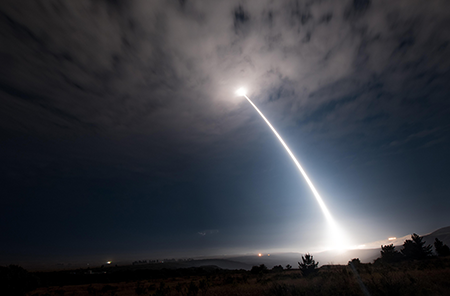
At the same time, their leaders have failed to resolve disputes about existing treaties or launch new negotiations to limit or further cut their deadly arsenals below the New START ceiling of 1,550 deployed nuclear warheads and 700 strategic missiles and bombers each.
In 2018, shortly after he withdrew the United States from the Intermediate-Range Nuclear Forces Treaty, U.S. President Donald Trump foolishly bragged about the nuclear stockpile that “until people come to their senses, we will build it up. It’s a threat to whoever you want, and it includes China, and it includes Russia, and it includes anybody else that wants to play that game.”
China has responded to U.S. nuclear and conventional military plans by pursuing a buildup of its historically “minimal” nuclear force to ensure that it retains an assured “second strike” capability. Russia has continued to develop new types of intermediate range missiles, as well as some new and exotic strategic systems designed to bypass U.S. missile defense capabilities.
Successive presidential administrations and congresses have failed to seriously consider alternatives that would have reduced costs and still maintained a devastating nuclear force.
Now, the cost of the U.S. nuclear modernization program is skyrocketing even further, siphoning resources from other more pressing human needs and national security priorities.
In April, the Congressional Budget Office issued its latest 10-year cost projection of the departments of Defense and Energy plans to operate, sustain, and modernize existing U.S. nuclear forces and purchase new forces: a total of $946 billion in the 2025-2034 period, or about $95 billion per year.
This new estimate is 25 percent, or $190 billion, greater than the last CBO estimate of $756 billion, which covered the 2023-2032 period. Incredibly, the $946 billion estimate does not include all of the likely cost growth of the new Sentinel intercontinental ballistic missile program, which the Pentagon acknowledged in July 2024 would cost 81 percent, or $63 billion, more than the program’s baseline estimate of $78 billion, generated in 2020.
Find Out the Facts & Sign the Petition: Why NMED Should Deny LANL’s Request for Tritium Releases
Why NMED Should Deny LANL’s Request for Tritium Releases
The Los Alamos National Laboratory plans to begin large releases of radioactive tritium gas any time after June 2, 2025. The only roadblock to the Lab’s plans is that it needs a “Temporary Authorization” from the New Mexico Environment Department to do so.
Reasons why NMED should deny LANL’s request are:
- The state Environment Department has a duty to protect the New Mexican As it states, “Our mission is to protect and restore the environment and to foster a healthy and prosperous New Mexico for present and future generations.” 1
- Why the rush? LANL explicitly admits there is no urgency. According to the Lab’s publicly-released “Questions and Answers” in response to “What is the urgency for this project?”
“There is no urgency for this project beyond the broader mission goals to reduce onsite waste liabilities.” 2
-
- In addition, the National Nuclear Security Administration (NNSA) admits that the end time frame for action is 2028, not 2025.3 Therefore, there is time for deliberate consideration.
- Contrary to NMED’s Resource Conservation and Recovery Act permit for LANL, the Lab has not fulfilled its duty to inform the public via NMED of possible alternatives to its planned tritium releases.4 According to Tewa Women United, “LANL has told EPA there are 53 alternatives; that list of alternatives, initially requested in 2022, has not yet been Tewa Women United has repeatedly asked LANL to provide the public with that list.” 5
University of New Mexico to host exhibit on nuclear history, technology, weapons
ALBUQUERQUE, N.M. (KRQE) — A provocative international exhibit will open soon at the University of New Mexico. “the bomb” is an immersive, multi-media installation exploring the history, technology, and threat of nuclear weapons.
By Nicole Sanders, KRQE | April 22, 2025 krqe.com
The installation includes an hour-long film projected on 45 screens conveying the hidden chaos and danger of the nuclear age. The experience is coming to UNM from April 30 to May 30. The full schedule at Zimmerman Library is available below:
- Wednesday, April 30
- Friday, May 2, 2025
- Friday, May 9, 2025
- Friday, May 16, 2025
- Friday, May 23, 2025
- Friday, May 30, 2025
Formal Comments on the Draft Site-Wide Environmental Impact Statement for Continued Operation of the Los Alamos National Laboratory
The National Environmental Policy Act requires the Los Alamos National Laboratory to periodically prepare a new “Site-Wide Environmental Impact Statement (SWEIS) for Continued Operations.”
Please use NukeWatch NM’s recent extensive comments on the Lab’s new draft SWEIS as a resource and citizens’ guide to Lab issues.
Did you know, for example, that:
• LANL’s nuclear weapons production budget has doubled over the last decade?
• The Lab’s so-called cleanup plan is to “cap and cover” some 200,000 cubic yards of radioactive and toxic waste, leaving them permanently buried as a perpetual threat to groundwater?
• There is a planned intentional release of up to 30,000 curies of radioactive tritium gas, all without a public hearing?
Use our lengthy formal comments as a starting point, toolkit or resource for dissecting ongoing and future issues at LANL!
We encourage you to use our comments to ask for follow-up info, either from us here at NukeWatch or from the Lab, and to demand better accountability and transparency! Use as background or briefing material for local and congressional advocacy.
For example:
- Cite or excerpt our comments in future public processes under the National Environmental Policy Act. For example, we are expecting that a nationwide programmatic environmental impact statement for plutonium “pit” bomb core production will be announced soon, the result of a lawsuit in which NukeWatch led.
- Share with those organizing around stopping expanded plutonium pit production and advocating for genuine radioactive and toxic wastes cleanup.
- Learn about LANL’s proposed electrical transmission line across the environmentally and culturally sensitive Caja del Rio and alternatives that were not considered.
- The National Environmental Policy Act itself is under assault by the Trump Administration. We expect environmental justice and climate change issues to be stripped from LANL’s final Site-Wide Environmental Impact Statement. This needs to be resisted!
NukeWatch NM argued that the draft SWEIS should be withdrawn and a new one issued because:
• The NNSA has rigged the draft LANL Site-Wide EIS with three self-serving scenarios:
– Expanded nuclear weapons programs (contradictorily called the “No Action Alternative”).
– Yet more expanded nuclear weapons programs (“Modernized Operations Alternative”).
– Yet far more expanded nuclear weapons programs (“Expanded Operations Alternative”).
• A Reduced Operations Alternative must be included.
• The SWEIS’ fundamental justification for expanded nuclear weapons programs is “deterrence.” But “deterrence” has always included nuclear warfighting capabilities that could end human civilization overnight.
• The SWEIS purports to align with U.S. obligations under the 1970 NonProliferation Treaty. That is demonstrably false.
• Future plutonium pit production is NOT to maintain the safety and reliability of the existing nuclear weapons stockpile. Instead, it is for new-design nuclear weapons that could lower confidence in stockpile reliability and/or prompt a return to testing.
• The SWEIS’ No-Action Alternative violates the National Environmental Policy Act (NEPA).
• The legally required programmatic environmental impact statement on pit production should be completed first, followed by the LANL SWEIS.
• Plutonium pit reuse should be analyzed as a credible alternative to pit production.
• A recent proposal for a data center at LANL is not in the SWEIS. It raises huge issues of future water and electrical use, the appropriateness of commercial interests at a federal lab, and the possible fusion of artificial intelligence and nuclear weapons command and control.
• Recent Executive Orders could strip the final SWEIS of environmental justice and climate change analyses. This must have clarification.
• Planned tritium releases should be fully analyzed.
• The Electrical Power Capacity Upgrade should be analyzed will all credible alternatives.
• The proposed BioSafety Level-3 facility must have its own standalone EIS.
• All Defense Nuclear Facilities Safety Board concerns should be addressed and resolved.
• Genuine comprehensive cleanup should be a preferred alternative.
• A new SWEIS should follow a new overdue Probabilistic Seismic Hazard Analysis.
Nuclear Weapons Issues & The Accelerating Arms Race: April 2025
Nuclear weapons
Air Force Weighs Keeping 1970s-Era Missiles Until 2050
The US Air Force is considering contingency plans that would extend the life of 1970s-era intercontinental ballistic missiles by 11 more years to 2050 if delays continue to plague the new Sentinel models intended to replace them. The current plan is to remove all 400 Minuteman III ICBMs made by Boeing Co. from silos by 2039… The Sentinel was projected last year to be deployed starting in May 2029. The first test flight was once projected for December 2023, but fiscal 2025 budget documents indicated a slip to February 2026.
The estimated cost of the new Sentinel intercontinental ballistic missiles (ICBM), originally at ~$110 billion, is now north of $180 billion. And this is before recognition of the immensity of supplying new command and control communications and recent consideration that its hardened silos may have to be replaced. IMHO it’s a propitious time to argue again for eliminating the land-based ICBM leg of the Triad. After all, one of its stated purposes is to act as a “nuclear sponge” for incoming Russian warheads. The odds of that are not zero and may increase if ICBMs are uploaded with multiple warheads after the New Strategic Arms Reduction Treaty expires in February 2026. More temptation for a preemptive first strike.
Calls to restart nuclear weapons tests stir dismay and debate among scientists
By Emily Conover, Science News | March 27, 2025 sciencenews.org
When the countdown hit zero on September 23, 1992, the desert surface puffed up into the air, as if a giant balloon had inflated it from below.
It wasn’t a balloon. Scientists had exploded a nuclear device hundreds of meters below the Nevada desert, equivalent to thousands of tons of TNT. The ensuing fireball reached pressures and temperatures well beyond those in Earth’s core. Within milliseconds of the detonation, shock waves rammed outward. The rock melted, vaporized and fractured, leaving behind a cavity oozing with liquid radioactive rock that puddled on the cavity’s floor.
As the temperature and pressure abated, rocks collapsed into the cavity. The desert surface slumped, forming a subsidence crater about 3 meters deep and wider than the length of a football field. Unknown to the scientists working on this test, named Divider, it would be the end of the line. Soon after, the United States halted nuclear testing.
Beginning with the first explosive test, known as Trinity, in 1945, more than 2,000 atomic blasts have rattled the globe. Today, that nuclear din has been largely silenced, thanks to the norms set by the Comprehensive Nuclear-Test-Ban Treaty, or CTBT, negotiated in the mid-1990s.
Only one nation — North Korea — has conducted a nuclear test this century. But researchers and policy makers are increasingly grappling with the possibility that the fragile quiet will soon be shattered.
Some in the United States have called for resuming testing, including a former national security adviser to President Donald Trump. Officials in the previous Trump administration considered testing, according to a 2020 Washington Post article. And there may be temptation in coming years. The United States is in the midst of a sweeping, decades-long overhaul of its aging nuclear arsenal…
Nuclear Nightmare: Meet America’s New B61-12 Gravity Bomb
What makes the B61-12 particularly impressive is the bomb’s ability to adjust its destructive yield depending on the operational conditions and demands.
By Stavros Atlamazoglou, National Interest | March 26, 2025 nationalinterest.org
Over the past months, the U.S. Air Force added another potent weapon to its arsenal: a new nuclear bomb, having recently completed production at Sandia National Laboratories in Albuquerque, New Mexico.
The B61-12 nuclear gravity bomb achieved full system production recently and is now fully operational. The nuclear bomb is one of the most versatile munitions of its type in the world, and a useful addition to the U.S. military’s nuclear deterrent capabilities.
The B61-12’s Unique Variable Yield Design
Sandia, one of the three main research and development laboratories for nuclear munitions, completed the production of the B61-12 nuclear gravity bomb. The nuclear munition is now fully operational.
What makes the B61-12 particularly impressive is the bomb’s ability to adjust its destructive yield depending on the operational conditions and demands. Put simply, the B61-12 is four bombs in one. The nuclear munition can be adjusted to four different yields—0.3, 1.5, 10, or 50 kilotons. The difference in yields means that the B61-12 has tactical, operational, and potentially even strategic utility.
Eight decades of nuclear threats are too much
Santa Fe New Mexican: My View John C. Wester
By John Wester, The Santa Fe New Mexican | March 15, 2025 santafenewmexican.com
I am John C. Wester, Archbishop of Santa Fe. I’m speaking on behalf of my archdiocese, and the archbishop of Seattle, the bishop of Hiroshima, and the archbishop of Nagasaki. We take guidance from our Holy Father, Pope Francis, who has declared the very possession of nuclear weapons to be immoral. We pray for his health.
Two years ago, in Nagasaki, on the 78th anniversary of its atomic bombing, we Catholic leaders formally created the Partnership for a World without Nuclear Weapons. Our four dioceses include the birthplace of nuclear weapons, the most deployed weapons in the United States, and the only two cities that to date have suffered atomic bombings. We lend our voices in staunch support of the Treaty on the Prohibition of Nuclear Weapons, at this Third Meeting of State Parties.
In July 2017, the Vatican was the first nation-state to sign and ratify the treaty. We note that the nuclear weapons powers have never honored their long-held obligations, under the 1970 Non-Proliferation Treaty, to enter into serious negotiations leading to global nuclear disarmament.
In contrast, the entry into force of the ban treaty was a great step toward the light of peace. The nuclear armed states have a moral obligation to hear the voices of the majority of the world, and to listen to those who are threatened by annihilation, at the whim of any one of their nine leaders.
The New York Times: DOGE Cuts Reach Key Nuclear Scientists, Bomb Engineers and Safety Experts
“Firings and buyouts hit the top-secret National Nuclear Security Administration amid a major effort to upgrade America’s nuclear arsenal. Critics say it shows the consequences of heedlessly cutting the federal work force.”
“The department has said that most of the fired employees handled administrative and clerical tasks that were not critical to the agency’s operation. But an analysis of the internal documents by The Times, coupled with interviews with 18 current and former agency officials, shows that is not true for the bulk of people who took the buyout,”
By Sharon LaFraniere, Minho Kim and Julie Tate, The New York Times | March 17, 2025 nytimes.com
…The Times reports that many had top-secret security clearance, giving them access to information on how nuclear weapons are made.
North Korea vows to ‘strengthen’ nuclear capabilities, rejecting G7 call for denuclearization
“The G7 called on Friday for North Korea to “abandon” its nuclear program.”
By Kevin Shalvey, ABC News | March 17, 2025 abcnews.go.com
LONDON — North Korea on Monday vowed to “steadily update and strengthen” its nuclear capabilities, a firm rejection of the G7’s call for Pyongyang to “abandon” its nuclear ambitions.
The country’s Foreign Ministry said that its “nuclear armed forces will exist forever as a powerful means of justice which defends the sovereignty of the state, territorial integrity and fundamental interests,” according to the Korean Central News Agency, a state-run media outlet.
How nuclear deterrence in Europe may change
“What does nuclear deterrence look like in Europe now that NATO is unsure whether the U.S. will be a committed partner? NPR speaks with Paul Cormarie, analyst with the Rand Corporation.”
By A Martínez, NPR | March 17, 2025 abcnews.go.com
Russia’s president, Vladimir Putin, says he supports a 30-day ceasefire with Ukraine in theory. But he adds that Ukraine would need to accept further conditions before a deal could be finalized. Now, in the interim, European leaders are discussing ways to discourage future Russian aggression. French President Emmanuel Macron has proposed using France’s nuclear capabilities as a deterrent to Russian threats. But what does nuclear deterrence look like in Europe if NATO is unsure if the U.S. will be a committed partner?
Hanford nuclear site subcontractor, owner to pay $1.1M for COVID loan fraud
“The money was intended to retain and maintain payroll for Hanford site workers assigned to the nuclear reservation in Eastern Washington and also a few Department of Veterans Affairs workers during the COVID-19 pandemic.”
“Within 48 hours of BNL receiving the Paycheck Protection Program loan at least $453,000 had been spent to pay off Stevenson’s personal and family debts, according to an indictment.
That included $100,000 transferred to Stevenson’s father and $48,600 to a family trust, according to court documents.
Much of the rest of the money was used to pay off credit card debt, according to the indictment.
The federal government later forgave the loan, which cleared it from having to be repaid.
BNL and Stevenson later applied for and received another Paycheck Protection Program loan of nearly $820,000.”
By Annette Cary, Tri-City Herald (Kennewick, Wash.) (TNS), The Columbian | March 12, 2025 columbian.com
Mar. 11—A former Hanford nuclear site subcontractor and its owner will pay a total settlement of just over $1.1 million to resolve accusations they defrauded the federal government through a COVID pandemic loan program.
On Wednesday, U.S. Judge Stanley Bastian in Yakima sentenced BNL Technical Services, owned by Wilson Pershing Stevenson III, to pay nearly $494,000 restitution to the federal government, as proposed in a settlement agreement.
That is in addition to $611,000 Stevenson, of Nashville, Tenn., already agreed to pay in a civil settlement to resolve his liability in the case.
Nuclear Watch New Mexico and Santa Fe Archbishop John C. Wester Attend the Third Meeting of States Parties to the Treaty on the Prohibition of Nuclear Weapons
We had the honor of joining the Archbishop of Santa Fe, John Wester, in attending the third Meeting of States Parties to the Treaty on the Prohibition of Nuclear Weapons last week, March 3-7 in New York City. The archbishop gave mass to several different groups (see photos below) and spoke at the UN headquarters as part of Civil Society.
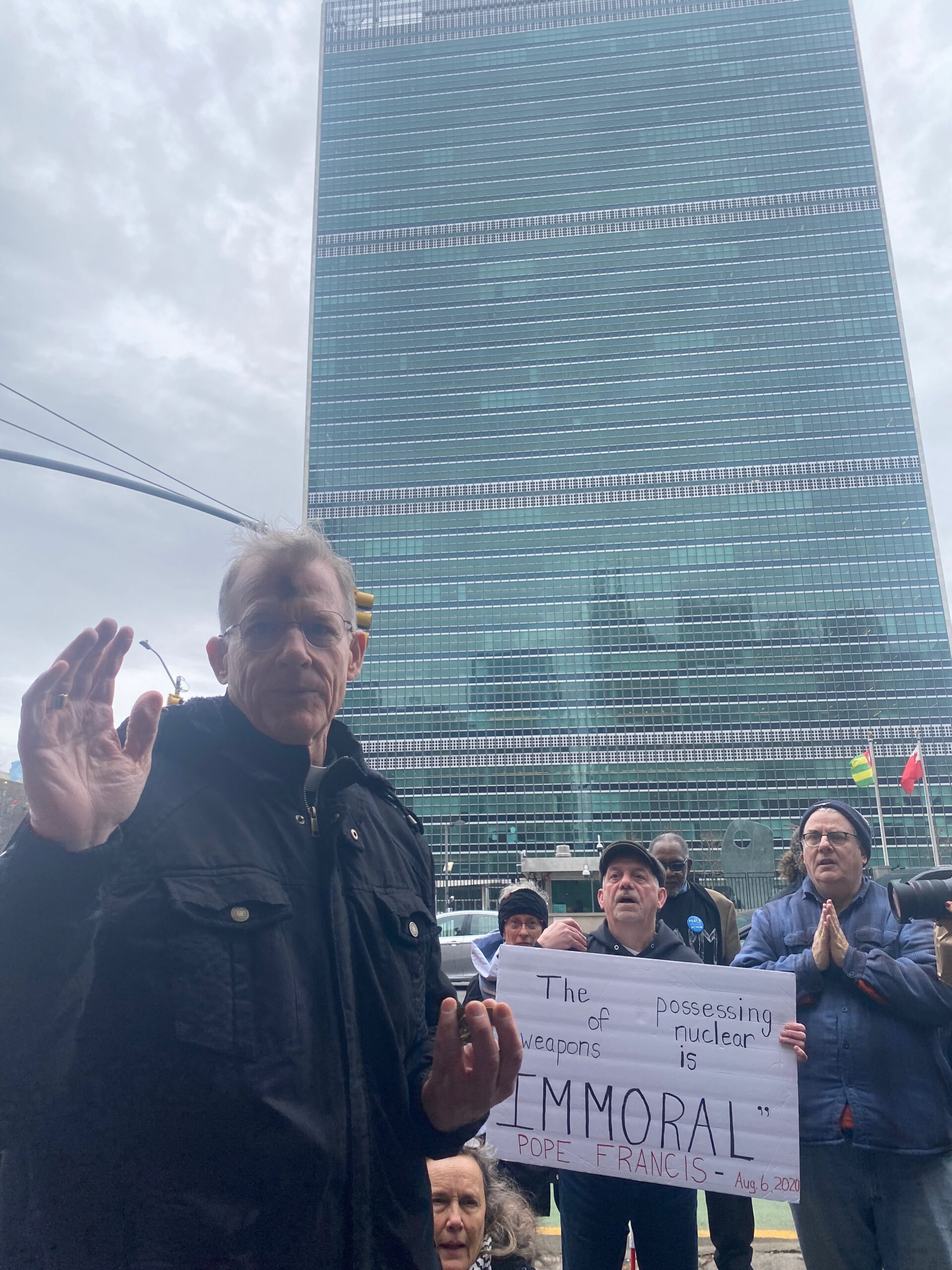
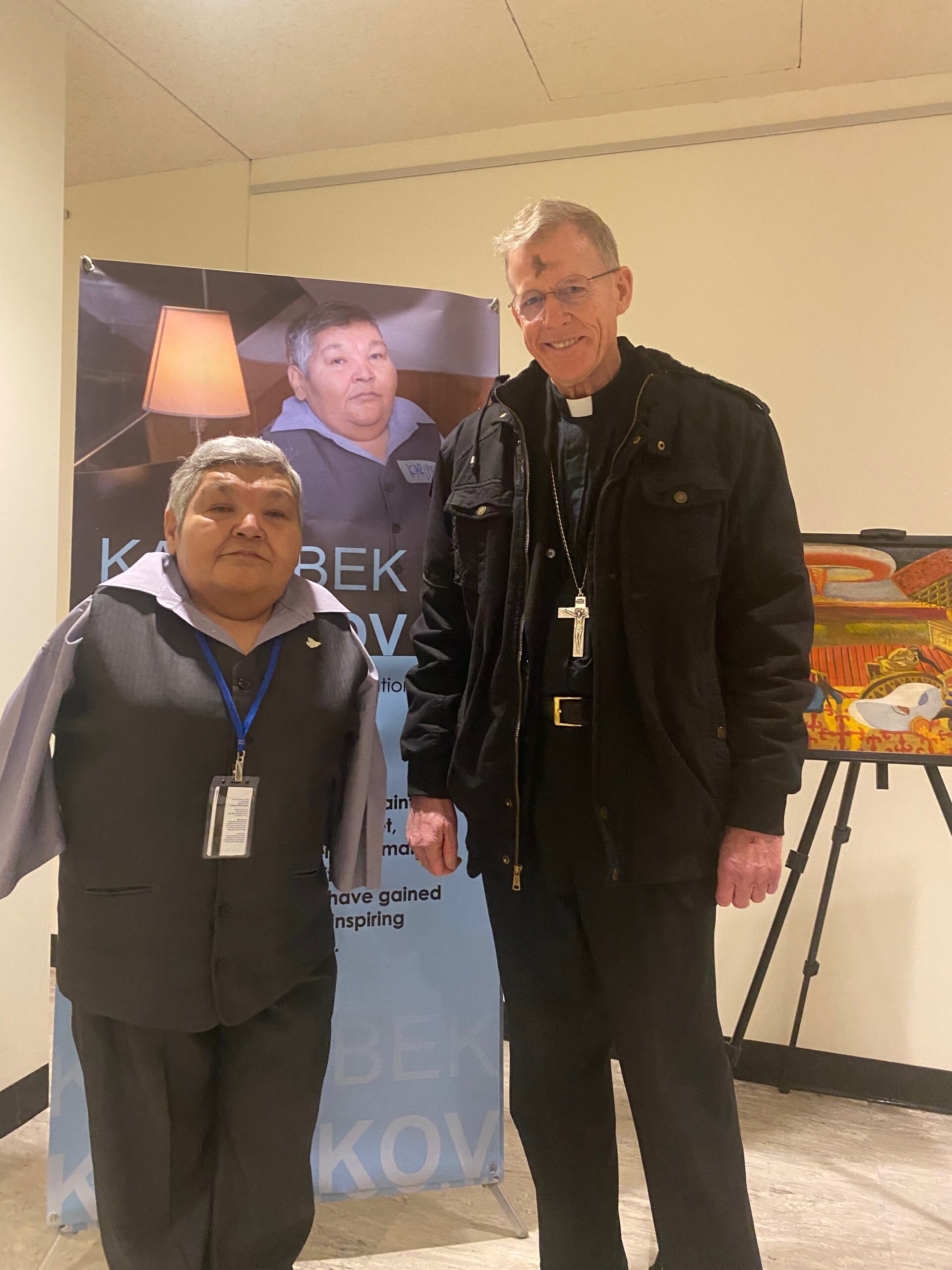
In New York City this week? Join Pax Christi members and friends at Mass with Archbishop John Wester (Santa Fe NM) on Tuesday, March 4, 6 pm, at the Church of Our Saviour, 59 Park Avenue at 38th Street. Use this link to RSVP. #TPNW #3MSP #nucleardisarmamentwww.dorothydayguild.org/WesterMass25
— Pax Christi USA (@paxchristiusa.bsky.social) 2025-03-03T16:35:50.942Z
Germany skips UN conference on banning nuclear weapons in New York
“Germany has decided not to take part in a UN conference in New York to review a landmark treaty on nuclear weapons prohibition.”
By dpa International | March 4, 2025 dpa-international.com
“The Treaty on the Prohibition of Nuclear Weapons dates back to a time before the Russian war of aggression against Ukraine,” the Foreign Office told dpa in Berlin on Tuesday. “The intention and ambition of the treaty no longer reflect the current reality in security policy.”
The treaty was signed in 2017 and came into force in 2021. There are currently 94 signatories and 73 states parties, according to the International Campaign to Abolish Nuclear Weapons (ICAN).
Germany does not possess nuclear weapons but is allied with three nuclear powers in NATO: the United States, France and the United Kingdom.
Berlin is not a signatory to the prohibition treaty, but it participated in previous conferences as observers.
Brief Analysis of Today’s U.S. Supreme Court Oral Arguments on the Illegality of Licensing Radwaste Dumps in TX and NM
Today the United States Supreme Court heard arguments in the case of the Nuclear Regulatory Commission vs. Texas. At issue is whether the NRC exceeded its authority when it approved licenses for proposed “consolidated interim storage facilities” for high-level radioactive waste, and this includes highly irradiated “spent” fuel from nuclear power plants.
Two consolidated interim storage facilities are planned for western Texas and southeastern New Mexico. The Nuclear Waste Policy Act of 1982, as Amended specifically prohibits private “interim” storage of federal spent nuclear fuel, and disallows the Department of Energy from taking title to the waste unless a permanent geologic repository is licensed, built and opened. The law intended to prevent private “interim” storage of federal radioactive waste because interim storage is much less robust than permanent storage, and would double the risk of accident or attack during transport, since consolidated “interim” storage means the waste has to be moved twice, once to the CISF and again to a permanent repository.
Broken arrows: The hidden secret behind America’s missing nuclear weapons
“Dedicated Navy divers, demolition teams, and high-powered sonar spent weeks searching the ocean floor and came up empty.”
By Kaif Shaikh, Interesting Engineering | March 3, 2025 interestingengineering.com
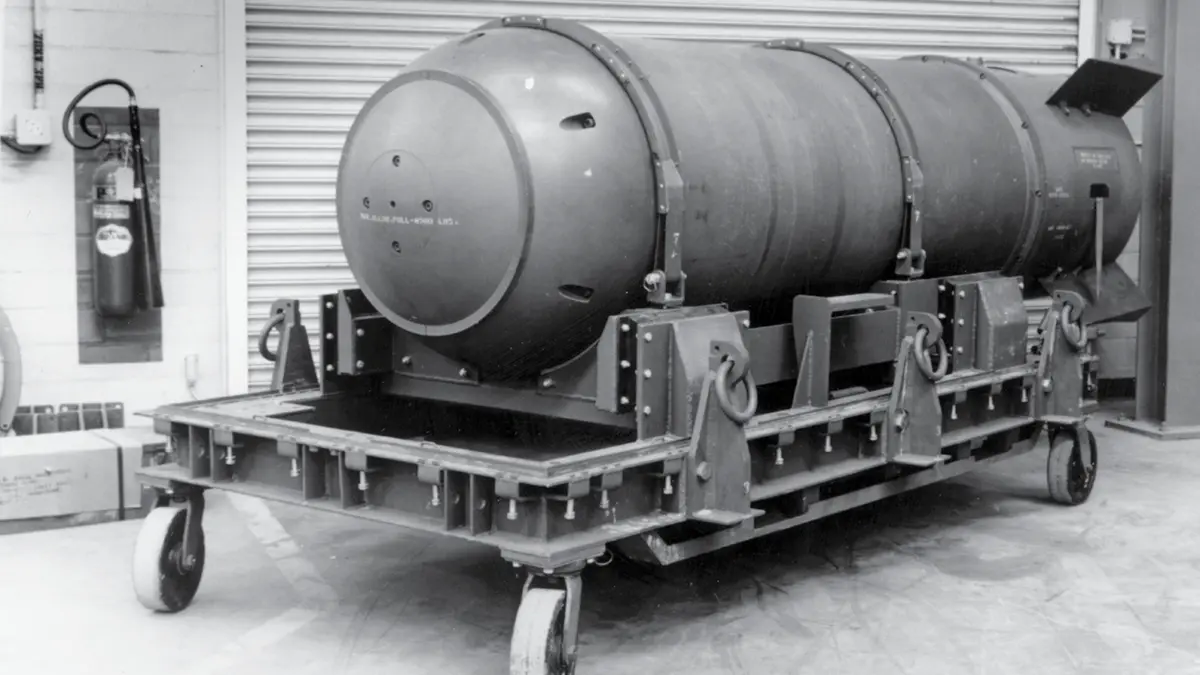
Throughout history, the idea of misplacing a nuclear weapon may sound like a plot twist in an espionage novel. The United States has experienced more than a handful of such incidents. Known as “Broken Arrows,” these events typically refer to any accidents involving nuclear weapons that do not pose an immediate risk of triggering a nuclear war.
For decades, details remained hidden behind top-secret clearances. However, unclassified records reveal that the U.S. military has had a surprising number of mishaps, with some bombs still unaccounted for to this day.
What are broken arrows?
The Department of Defense defines a “Broken Arrow” as any incident involving a U.S. nuclear weapon or warhead that results in accidental launching, firing, detonating, theft, or loss of the weapon. From 1950 to 1980, official sources cite 32 Broken Arrow incidents, but there may have been more, given the secrecy surrounding nuclear matters.
Christie Brinkley: Don’t let the US resume nuclear weapon tests that ended decades ago
“The United States and other nuclear powers are now moving closer to resuming nuclear weapons tests, decades after testing ended. This highly disturbing trend must be halted.”
By Christie Brinkley Special to The Kansas City Star Miami Herald | March 3, 2025 miamiherald.com
Since the atomic age, 2,056 nuclear weapons have been detonated, 528 of them above the ground. The United States and Soviet Union accounted for about 85% of these tests. The explosive power of atmospheric tests equaled 29,000 Hiroshima bombs. Airborne radioactive fallout circled the globe, re-entered the environment through precipitation, and entered human bodies through food and water.
Cold War bomb testing was part of a massive increase in the number of nuclear weapons, which peaked at more than 60,000. After nuclear war was barely avoided during the Cuban missile crisis, public pressure convinced leaders to ban all above-ground tests in 1963 — a treaty that has never been violated.
The test ban treaty was a huge achievement for peace, beginning eased tensions between nuclear nations. It also was a landmark for public health. A study by St. Louis residents and scientists found an enormous buildup of radioactive strontium-90 levels in baby teeth — 63 times higher in children born in 1963 compared to those born in 1950.
LISTEN LIVE TO U.S. SUPREME COURT ORAL ARGUMENTS ON THE ILLEGALITY OF LICENSING RADWASTE DUMPS IN TX AND NM
“The case pits the nuclear industry’s push for CISFs against the interests of fossil fuel companies which object to high-level radioactive waste dumped in their drilling/fracking areas, the state governments of Texas and New Mexico, which have passed laws prohibiting importation of nuclear waste to their states, and cities along the transport routes which object to it being shipped through their jurisdictions. Their amicus briefs in the case are posted here.”
For immediate release
MEDIA ALERT for Wednesday, March 5, 2025
WASHINGTON, D.C.,
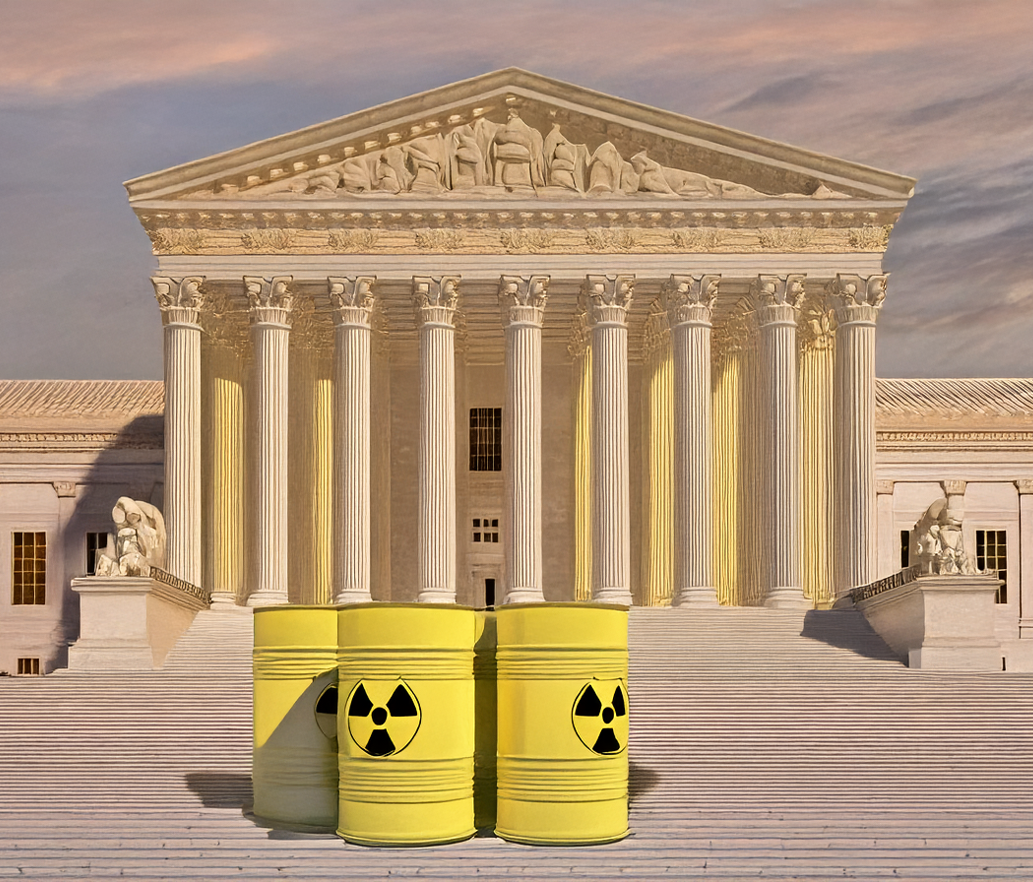 WHAT? Wednesday morning, March 5, the United States Supreme Court will hear oral arguments in Nuclear Regulatory Commission vs. Texas. At issue in the SCOTUS (Supreme Court of the U.S.) proceeding is whether the NRC exceeded its authority when it approved licenses for proposed “consolidated interim storage facilities” for high-level radioactive waste including highly irradiated “spent” fuel from nuclear power plants. Two CISFs are planned for western Texas and southeastern New Mexico. The Nuclear Waste Policy Act of 1982, as Amended specifically prohibits private “interim” storage of federal spent nuclear fuel, and disallows the Department of Energy from taking title to the waste (which would be necessary for DOE to transport it to CISFs), unless and until a permanent geologic repository is licensed, built and opened to receive the waste. The law intended to prevent private “interim” storage of federal radwaste, which is much less robust than permanent storage, and would double the risk of accident or attack during transport, since consolidated “interim” storage necessitates moving the waste twice, once to the CISF and again to a permanent repository. The NRC approved recent CISF license applications despite the law, saying it anticipated Congress would change it in the future. But the federal Fifth Circuit court ruled that the NRC didn’t have that authority. If the Supreme Court strikes that ruling down, it could open the floodgates for thousands of shipments of spent fuel from nuclear power plants across the US, through many states, to CISFs in Texas and New Mexico.
WHAT? Wednesday morning, March 5, the United States Supreme Court will hear oral arguments in Nuclear Regulatory Commission vs. Texas. At issue in the SCOTUS (Supreme Court of the U.S.) proceeding is whether the NRC exceeded its authority when it approved licenses for proposed “consolidated interim storage facilities” for high-level radioactive waste including highly irradiated “spent” fuel from nuclear power plants. Two CISFs are planned for western Texas and southeastern New Mexico. The Nuclear Waste Policy Act of 1982, as Amended specifically prohibits private “interim” storage of federal spent nuclear fuel, and disallows the Department of Energy from taking title to the waste (which would be necessary for DOE to transport it to CISFs), unless and until a permanent geologic repository is licensed, built and opened to receive the waste. The law intended to prevent private “interim” storage of federal radwaste, which is much less robust than permanent storage, and would double the risk of accident or attack during transport, since consolidated “interim” storage necessitates moving the waste twice, once to the CISF and again to a permanent repository. The NRC approved recent CISF license applications despite the law, saying it anticipated Congress would change it in the future. But the federal Fifth Circuit court ruled that the NRC didn’t have that authority. If the Supreme Court strikes that ruling down, it could open the floodgates for thousands of shipments of spent fuel from nuclear power plants across the US, through many states, to CISFs in Texas and New Mexico.
Expanded Plutonium “Pit” Bomb Production is Immoral – Spend Nuclear Weapons “Modernization” Money Ethically ELSEWHERE
Why the nation’s nuclear waste may eventually be headed to northwest Colorado
Nuclear waste is piling up at power plants around the country, and we have no idea where to put it. Many states are aggressively fighting plans for new storage facilities.
But northwest Colorado is quietly opening the door.
By In The NoCo, Scott Franz, Erin O’Toole, Brad Turner | February 22, 2025 kunc.org
KUNC’s investigative reporter Scott Franz recently traveled around rural Colorado talking with people about what nuclear waste storage could do for the local economy – and also interviewing folks who are dead set against that idea.
On this special edition of In The NoCo, we’ve combined all of Scott’s reporting from the past few months into a single episode. You can also see photos and check out more on this investigation.

Arms Control Association – Trump Regains Control Over Nuclear Policy: What’s Next?
It has been barely a month since Inauguration day, but it is apparent that Donald Trump is determined to reshape U.S. foreign policy, radically alter alliance relationships, and upend Washington’s approach toward key adversaries, like Russia, in ways that are not yet clear.
Arms Control Association | February 21, 2025 armscontrol.org
And here at home, Trump’s brash assertion of executive power is putting our nation’s democratic institutions and the rule of domestic law at risk, in part by altering or dismantling key government departments,agencies and functions, all without congressional approval.
All of this makes our mission to provide reliable information and sound policy solutions even more important and difficult.
The Arms Control Association has a clear and focused strategy to reduce the dangers posed by nuclear weapons and other WMD. Many of these priorities are outlined in this ACA-organized January 28 communication to all members of Congress that was endorsed by 16 of our partner organizations and leaders.
Like many others, however, we are still sorting out how to adjust to and contend with the post-Inauguration political dynamics.
But we must and we will, because critical, weapons-related security decisions lie ahead:
- So long as Russia’s assault on Ukraine continues, there is still a heightened risk of nuclear weapons use, and there are narrowing prospects for a deal to maintain limits on the U.S. and Russian nuclear arsenals after New START expires in one year.
- Although Trump has decried exorbitant military expenditures, the authors of Project 2025, the 920-page manifesto crafted by the Heritage Foundation and others, want the United States to spend even more than the current $756 billion ten-year price tag for nuclear modernization in order to increase the size and diversity of the U.S. arsenal. China and Russia are watching and will surely respond to any U.S. nuclear buildup.
- Project 2025 also calls for preparing to resume U.S. nuclear explosive testing for the first time since 1992. Should the United States do so, it would open the door to nuclear testing by other states, unravel the CTBT, and blow apart the global nonproliferation system at a time of increasing nuclear danger.
- Since Trump withdrew from the 2015 Iran nuclear deal, Tehran has expanded its capacity to produce weapons-grade nuclear material and reduced international inspectors’ access. Trump says he wants a nuclear deal; Iran’s president says he wants a nuclear deal. But time is short. Without a deal to scale back tensions and Iran’s nuclear capacity, we could see renewed international sanctions by October, Iranian withdrawal from the NPT, and/or an attempt by Israel to bomb Iran’s nuclear sites.
How exactly the second Trump administration and the new Congress will try to navigate all these nuclear-related challenges ahead is not yet clear — but if Project 2025 becomes the blueprint for U.S. nuclear weapons policy, we are in big trouble.
But, it may also be possible to steer us toward a safer course.
Trump wants to initiate denuclearization talks with Russia and China
On Thursday, President Donald Trump signaled that he wants to engage with Russia and China on denuclearization efforts.
By Erik English, BULLETIN OF ATOMIC SCIENTISTS | February 14, 2025 thebulletin.org
“There’s no reason for us to be building brand new nuclear weapons. We already have so many,” Trump said from the White House.
“You could destroy the world 50 times over, 100 times over. And here we are building new nuclear weapons, and they’re building nuclear weapons, and China’s building nuclear weapons.” The number of nuclear weapons the United States and Russia can have is established by New START, which expires in 2026. Without a new agreement, nuclear states could begin to build up their arsenals for the first time since the Cold War. “Hopefully, there’ll never be a time when we need those weapons,” Trump said. “That’s going to be a very sad day, that’s going to be probably oblivion.”
Share Your Experiences at Los Alamos National Laboratory
The New York Times would like to hear from you about workplace protocols and safety measures at LANL.
By Alicia Inez Guzmán | Alicia Inez Guzmán is reporting on the nuclear industry in New Mexico as part of The Times’s Local Investigations Fellowship – THE NEW YORK TIMES February 11, 2025 nytimes.com
More voices, better journalism. The questionnaire you are reading is just one tool we use to help ensure our work reflects the world we cover. By inviting readers to share their experiences, we get a wide range of views that often lead to a more deeply reported article. We make every effort to contact you before publishing any part of your submission, and your information is secure. Here’s more on how it works and why it’s good for us and you.
The Los Alamos National Laboratory (LANL) has recently embarked on the “new Manhattan Project” — a hiring spree and multibillion dollar expansion to build plutonium bomb cores for nuclear weapons.
The Times is writing about this new mission and how the lab is keeping workers safe, reporting accidents and environmental contamination and making needed upgrades to key facilities, including in Technical Area 55, the heart of bomb core production.
Have you or someone you know worked at TA-55 or another “hot site” and experienced a workplace accident or been exposed to plutonium, beryllium or another radioactive or toxic substance on the job? What safety measures were in place? Were there follow-up health assessments?
Please answer the questions using the form:
LANL Site-Wide EIS Hearings in Santa Fe and Los Alamos Filled with Loud Protest and Vehement Dissent: Nuclear Weapons are IMMORAL
In this Site-Wide EIS we’re given three options: Expanded nuclear weapons programs (hypocritically called the no action alternative), then we’re presented with yet more expanded nuclear weapons programs, and the third alternative is even more expanded nuclear weapons programs. What we really need is a genuine alternative in this Site-Wide, and I hope that citizens will repeatedly bring this up. We need a TRUE ALTERNATIVE in which the US begins to show global leadership towards nuclear disarmament that it promised to in the Non-Proliferation Treaty, and that should be reflected in the sitewide which shows just passive maintenance of the stockpile. We don’t need Pit Production because it’s for NEW designs – NOT to ensure the safety and reliability of the existing stockpile. The US, for our own national security and global security, we need to lead the world towards global nuclear disarmament – and this Site-Wide EIS does the opposite.
The hearings in Santa Fe and Los Alamos on February 11 and February 13, 2025, respectively, both had virtual participation options. The attendees online and in person were equally vehement in protesting the “rigged game” we’re given with this SWEIS and decrying the fact that there is no alternative besides increased nuclear weapons production.
And read an exceprt from the Archbishop of Santa Fe, John Wester’s comments:
“As we all know, we’re in an accelerating new nuclear arms race that’s made even more dangerous because of artificial intelligence, multiple nuclear actors and hypersonic delivery systems. It’s an already scary situation that has become even scarier, and what concerns me is that Los Alamos and Santa Fe play a key role in naturally fostering and promoting this new nuclear arms race – a race which I believe is an affront to all that is good and holy, all from our perspective that God has placed in us to live in harmony with one another. Nuclear weapons pose one of the greatest threats to that harmony. I think it’s important to know what I’m learning more and more about is that expanded plutonium pit production is not simply to maintain the safety and reliability of our existing so-called deterrence. I think it’s important that people are aware that it’s really for new design nuclear weapons for this new particular armed race. I think it’s important that that people recognize that deterrence is not the way to go. In that light, I would say obviously for me is a Catholic Bishop, Pope Francis I think has really changed the whole moral landscape of looking at nuclear weapons. On the 70th anniversary of the Hiroshima atomic bombing, Pope Francis declared that the very possession of nuclear weapons is immoral. As Catholics this was an extremely important shift there. The 1983 United states conference of Catholic Bishops did allow for deterrence – it was promoting disarmament but made caveats for deterrence. But Pope Francis has taken that off the table in saying that even possessing nuclear weapons is immoral, it’s unethical. One of the main reasons for this church’s shift on this was that the nuclear weapons powers really have failed in their pledge in 1970 when they joined the Non-Proliferation Treaty. The TPNW came about because of that failure, and so it seems to me then based on what Pope Francis said, that if possessing nuclear weapons is immoral, then expanding plutonium pit cores and modernizing our weapons systems in order to be more involved in the new nuclear arms race is also immoral. This policy is unethical. Now I want to be careful here, I am not saying that anyone working at Los Alamos or Sandia or Lawrence Livermore in California, I’m not judging them or saying there are immoral – that’s a different matter in one’s conscience. I’m saying that the policy is involved and the Pope said that nuclear weapons themselves are intrinsically immoral. I think that’s an important thing to keep in mind, that that we need to be moving toward disarmament and that if we’re not, if that’s not our trajectory, rather if it’s just to build up our defenses, then that’s an immoral buildup.”
Gearing Up for the Public Hearings on the LANL Draft Sitewide Environmental Impact Statement: Pit Production at LANL
“Nuclear Watch New Mexico hosted a workshop on February 6 on the newly released Draft Sitewide Environmental Impact Statement (SWEIS) for Los Alamos National Laboratory (LANL) to present information and elicit discussion on this NEPA process that Jay Coghlan, executive director of Nuke Watch, referred to as a “rigged game” at the beginning of the workshop. What that means will become evident as I review the part of the workshop I attended.”
By Kay Matthews, La Jicarita | February 7, 2025 lajicarita.wordpress.com
Archbishop John Wester, an outspoken critic of nuclear weapons proliferation under the guise of nuclear deterrence instead of disarmament spoke briefly to open the discussion. Quoting Pope Francis, he said, “possessing nuclear weapons is immoral.” He then said, “Pit production is immoral.” His only qualification is that it’s the policy that’s immoral, not the people who promote it. We’ve failed to uphold already existing treaties and failed to implement new ones. He’ll be going to the United Nations in March for a meeting, Treaty on the Non-Proliferation of Nuclear Weapons, and to Japan in August to meet with his partners in the World Without Nuclear Weapons.
Coghlan explained that next week the Department of Energy (DOE) and the semi-autonomous National Nuclear Security Administration (NNSA) will hold public hearings, as required by NEPA, on the LANL SWEIS, in Santa Fe, Española, and Los Alamos. He cautioned that while we should all be “cynical” about the process, we need to go ahead and protest the fact that all three alternatives provided in the SWEIS expand pit production, just at different amounts. The process is rigged because the DOE and NNSA failed to update a 2008 Environmental Impact Statement before pit production began at LANL (the other nuclear facility, the Savannah River Site in South Carolina, is slated to produce 50 pits a year but is completely unprepared for pit production).
The guest speaker was Dylan Spaulding, Senior Scientist for the Union of Concerned Scientists…
NukeWatch Los Alamos Lab Site-Wide EIS Workshop – February 6, 2025
Full Video Recording: NukeWatch Los Alamos Lab Site-Wide EIS Workshop |
NukeWatch Presentation: Los Alamos Lab Site-Wide EIS Workshop |
|---|---|
|
NukeWatch Los Alamos Lab Site-Wide EIS Workshop |
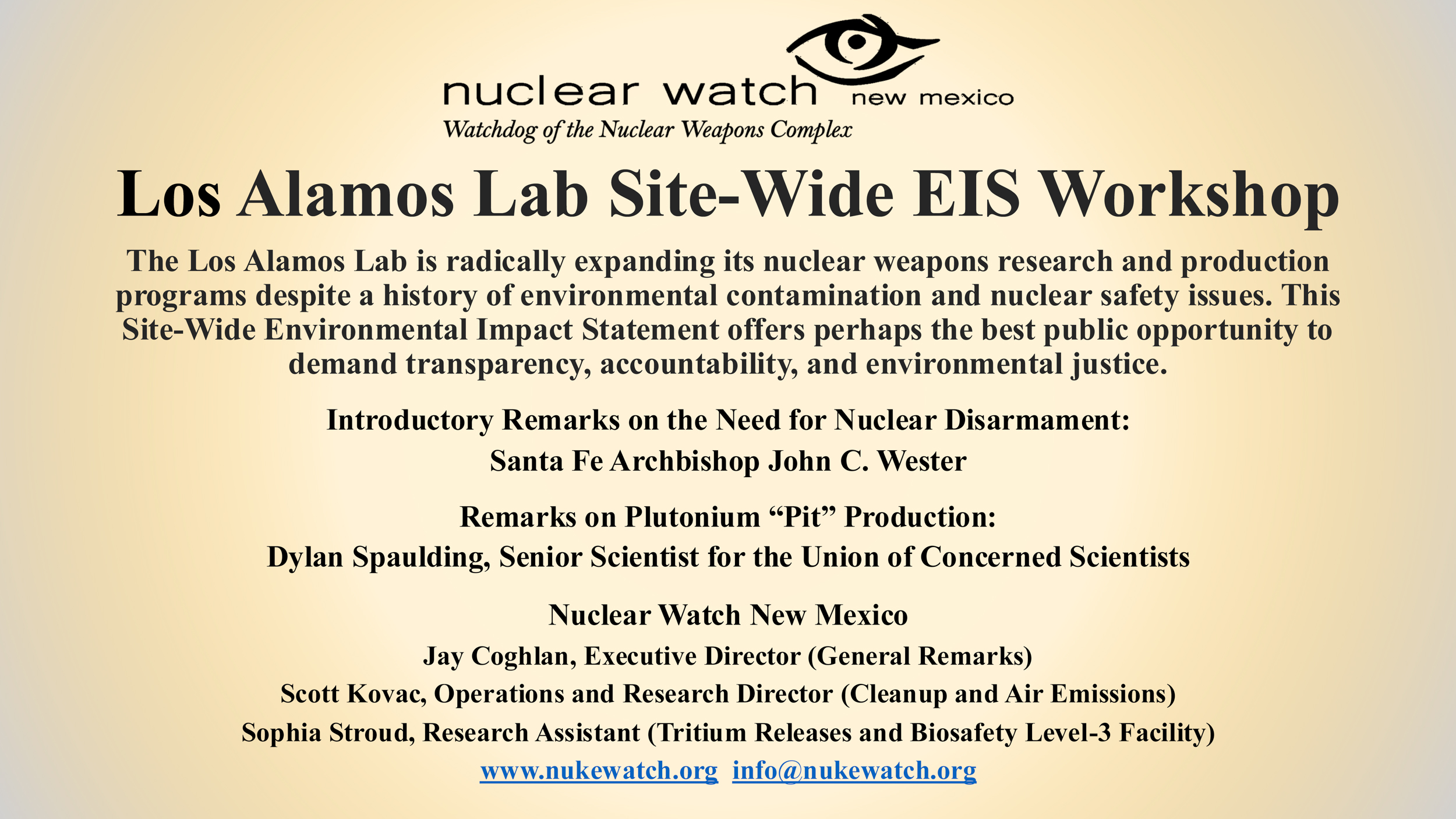 |
In Memoriam: Ken Mayers
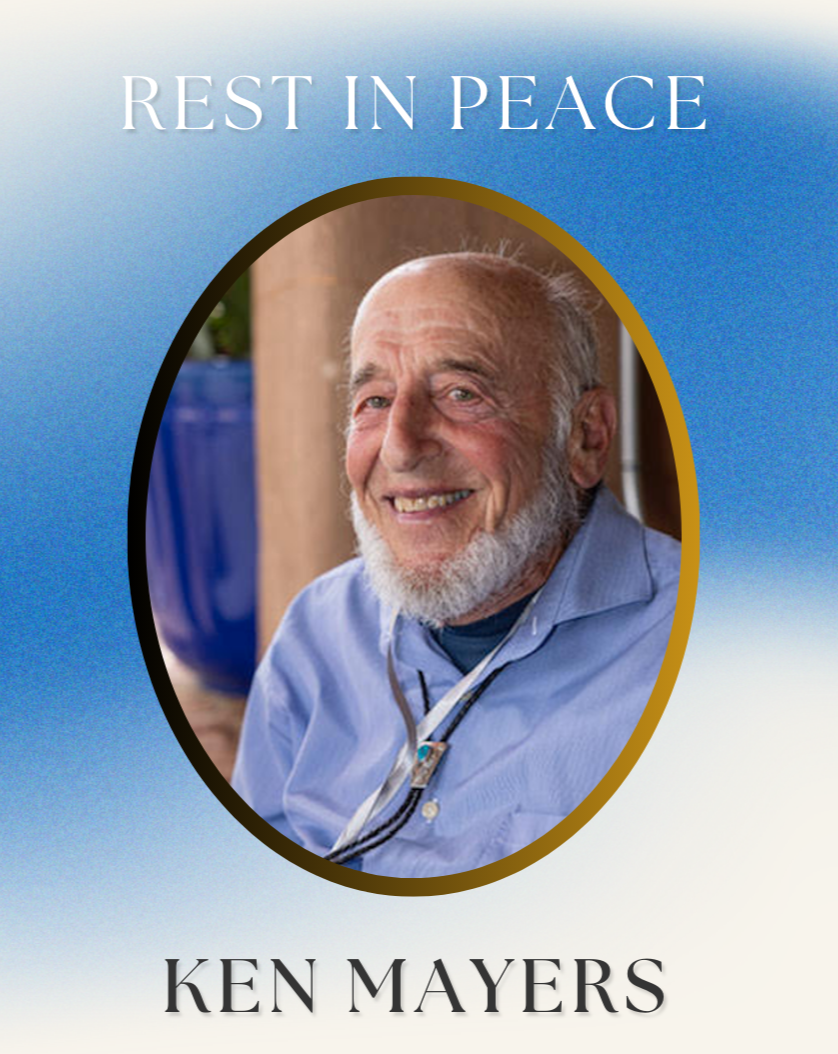 We here at NukeWatch will dearly miss Ken’s weekly presence at the corner vigil to protest Nuclear Weapons in Santa Fe.
We here at NukeWatch will dearly miss Ken’s weekly presence at the corner vigil to protest Nuclear Weapons in Santa Fe.
Locally, Ken was co-founder of the Santa Fe Chapter of Veterans for Peace and an active member of Santa Feans for Justice in Palestine. Ken worked with the local chapter of US Combatants for Peace and the Justice Council of the Unitarian Universalist Congregation in Santa Fe where he was also an enthusiastic baritone and co-founder of the NM Peace Choir.
A Celebration of Ken’s life will be held Friday, April 4 beginning at 12 noon at the corner of Sandoval and West Alameda, (Santa Fe’s weekly vigil to protest Nuclear Weapons), followed by lunch and a hybrid service at the UU Congregation, 107 West Barcelona Street, Santa Fe, NM.
For those wanting to pay tribute to Ken, please consider planting a tree through A Living Tribute (https://shop.alivingtribute.org/) or make a donation in his memory to the Santa Fe Joan Duffy Chapter of Veterans for Peace https://www.vfp-santafe.org/
Ken was a lifelong, passionate defender of peace. Read more:
Nuclear News Archive – 2022
How to Change the Face of Nuclear Policy: Diversify
Research has repeatedly shown that diverse teams generate the best outcomes and that the presence of women in policy discussions adds value and sustainability to policies and impact.
ARTICLE BY: LAURA S. H. HOLGATE & MICHELLE DOVER| nationalinterest.org

It has been one year since more than thirty leaders in nuclear policy stood up to advance gender equality through public pledges in support of institutional change. Since then, Gender Champions in Nuclear Policy, a leadership network in nuclear policy committed to breaking down gender barriers and making gender equality a working reality, has grown to include the leaders of over forty-two organizations worldwide. The latest, Thomas Mason, Director of Los Alamos National Laboratory, marks the first U.S. national laboratory director to join their ranks.
Collectively, the group has made 140 specific, time-bound commitments ranging from pledging to increase women’s participation in panels, events, and publishing, to establishing paid internship programs and bringing gender diversity to their Boards of Directors. Champions also pledge to use their own cachet as speakers to improve the gender balance of panel discussions.
Together, they are demonstrating that we can create change within our own institutions and networks to create better outcomes through diversity.
DOE Secretary Rick Perry believes Trump is God’s Chosen One
Rick Perry says Trump (and Obama) were ‘ordained by God’ to be president
ARTICLE BY: DANIEL BURKE | cnn.com
 (CNN) Like a lot of evangelical Christians, Energy Secretary Rick Perry believes in a God who gets involved in every aspect of our lives — including the election of Donald Trump as President.
(CNN) Like a lot of evangelical Christians, Energy Secretary Rick Perry believes in a God who gets involved in every aspect of our lives — including the election of Donald Trump as President.
“I’m a big believer that the God of our universe is still very active in the details of the day-to-day lives of government,” Perry told Fox News in remarks aired on Sunday.
“You know, Barack Obama doesn’t get to be the President of the United States without being ordained by God. Neither did Donald Trump.”
Perry went on to say that being God’s instrument on Earth doesn’t mean that Trump is a perfect person. Echoing the argument of other white evangelical Christians, the Texas Republican went on to cite several biblical figures, including King David, whose private lives didn’t always align with biblical standards.
LETHAL LEGACY: The US wants to bury SC’s plutonium stockpile forever. Its new home isn’t sure it wants it.
WIPP was supposed to be a demonstration for the rest of the country, a test run to see if nuclear waste could be buried in salt elsewhere.
It wasn’t meant to become America’s only nuclear repository — “pilot plant” is in its name — yet today it is. Watchdogs say that by tabbing thousands of barrels of plutonium waste to go there, the Energy Department is reshaping the mine’s purpose.
“What it (implies) is quite dramatic expansion of the Waste Isolation Pilot Plant or another WIPP-like facility somewhere,” said Jay Coghlan, director of Nuclear Watch New Mexico, another watchdog group.
BY: Thad Moore tmoore@postandcourier.com postandcourier.com Nov 23, 2019 Updated Nov 24, 2019
In the time it will take for South Carolina’s stockpile of weapons-grade plutonium to decay, you could repeat most of human history, starting back in the Stone Age.
By the time its byproducts lose the explosive potential to be used in nuclear weapons, some 7 billion years will have passed. The Earth itself will have doubled in age, and then some.
The U.S. government will officially decide in the next few years where the plutonium — the metal used to trigger nuclear weapons — will spend that eternity. And when it does, it will ask another part of the country to bear a profound burden: to house thousands of barrels filled with scraps of the Cold War and America’s nuclear arms race, a legacy that may well outlast our civilization.
That question will soon be posed to New Mexico, where the U.S. Department of Energy has excavated cavernous vaults deep below the ruddy soil in the state’s southeastern corner. The government hopes it will eventually hold tons of plutonium it has decided it no longer needs — enough to build a few thousand bombs the size of the one dropped over Nagasaki, Japan.
If New Mexico says yes, the Energy Department will bury some 20,000 steel drums deep underground there, in a ribbon of salt as thick as Charleston’s Ashley River is wide.
If it says yes, trucks will carry the plutonium load by load down Interstate 20 for the next three decades, and workers will lower it almost half a mile underground, where it will await its final fate: the mine’s slow collapse, and salt entombing it forever.
In Nagasaki and Hiroshima, Pope Francis calls for abolishing nuclear weapons
Pope Francis calls for a ‘world without nuclear weapons’ during visit
Pontiff urges disarmament as he tours Japan’s atomic bomb sites and meets survivors of the 1945 attacks
ARTICLE BY: JUSTIN MCCURRAY | theguardian.com
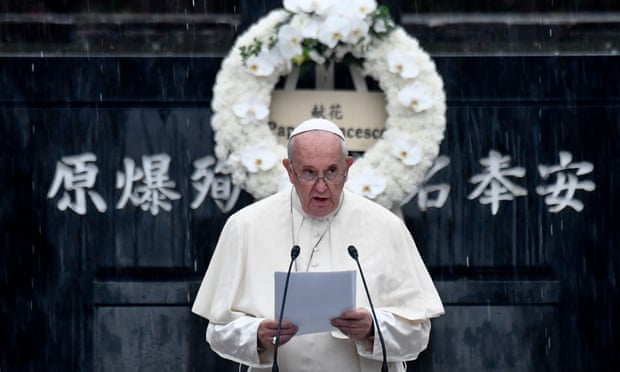
Pope Francis has condemned the “unspeakable horror” of nuclear weapons during a visit to Nagasaki, one of two Japanese cities destroyed by American atomic bombs towards the end of the second world war.
Speaking on the second day of the first papal visit to Japan for 38 years, Francis urged world leaders to end the stockpiling of nuclear weapons, saying it offered their nations a false sense of security.
“Convinced as I am that a world without nuclear weapons is possible and necessary, I ask political leaders not to forget that these weapons cannot protect us from current threats to national and international security,” he told hundreds of people at the city’s rain-drenched atomic bomb hypocenter park on Sunday.
Earlier, Francis had placed a wreath and prayed at the foot of a memorial to the 74,000 people who died instantly and in the months after the US dropped a nuclear bomb on Nagasaki on 9 August 1945, three days after it had carried out a nuclear attack on Hiroshima, in which 140,000 people died by the end of the year.
‘Sickening’: Jo Swinson condemned for unhesitatingly saying she would use nuclear weapons
This is a disgraceful response from @JoSwinson. Not for the 1st time in this general election, she confirms she's ready to press the nuclear button. Not even a moment's hesitation about the prospect of killing millions of people. We need better than this#ITVDebate #VoteOutNukes pic.twitter.com/W84cuLTuoy
— CND (@CNDuk) November 19, 2019
Deval Patrick: the latest presidential candidate to be uninformed on nuclear weapons
A whole slew of 2020 candidates have either pleaded ignorance on certain nuclear policies or given answers that were borderline incomprehensible.
ARTICLE BY JOHN KRZYANIAK | thebulletin.org
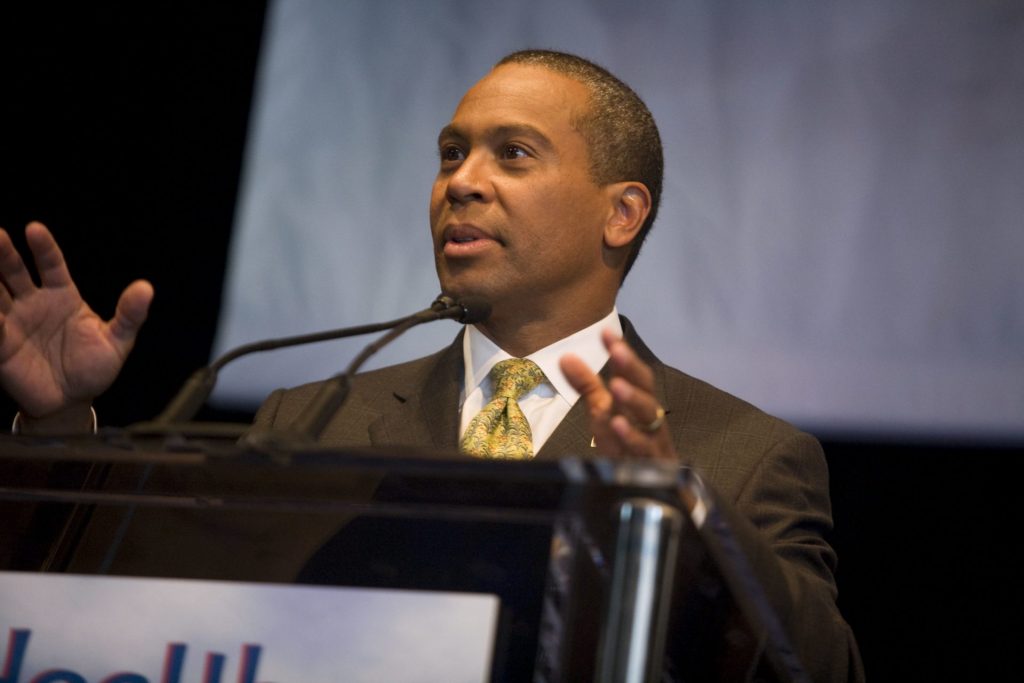
Deval Patrick, the former governor of Massachusetts, became the latest latecomer to the 2020 presidential campaign when he entered the fray last week. At the time of this writing, he does not have very many clear policy positions, or even a campaign website. But anyone running for president—even someone who’s still on the honeymoon period of his announcement—should expect to be asked tough policy questions, especially on important issues like nuclear weapons. Was Patrick prepared? Well, not really.
In a video circulating on social media, Jeremy Love, who identifies himself as a board member of New Hampshire Peace Action, approaches Patrick and starts to ask him about a no-first-use policy in the United States.
US to Europe: Fix Open Skies Treaty or we quit
ARTICLE BY JOE GOULD & AARON MEHTA | defensenews.com
WASHINGTON — NATO allies worried U.S. President Donald Trump will abandon the Open Skies Treaty have been told the administration views the arms control agreement as a danger to U.S. national security, and that unless those nations can assuage such concerns, the U.S. will likely pull out, Defense News has learned.
At a meeting in Brussels last week, Trump administration officials laid out for the first time a full suite of concerns with the treaty and made clear they were seriously considering an exit. The agreement, ratified in 2002, allows mutual reconnaissance flights over its 34 members, including the U.S. and Russia.
The U.S. outreach comes amid unusually strong and coordinated pressure from European allies inside and outside of NATO upon both the administration and Congress to remain in the treaty — and before a planned NATO leaders summit in London next month.
Allies generally argue the treaty is a valuable channel for transparency and dialogue between Russia and the United States, the world’s top two nuclear superpowers.
Screw Nevada, New Mexico, and Texas?! U.S. House Energy & Commerce Committee approves dangerously bad nuke waste bill
H.R. 2699 aims to open one or more dumps in the Southwest — so-called consolidated interim storage facilities (CISFs), targeted at New Mexico and/or Texas, as well as a permanent burial dump at Yucca Mountain, Nevada, on Western Shoshone Indian land. If any one of these dumps open, large-scale shipments of high-risk irradiated nuclear fuel, by road, rail, and/or waterway, would travel through most states, past the homes of millions of Americans.
H.R. 2699, the Nuclear Waste Policy Amendments Act of 2019, was passed by the U.S. House Energy & Commerce Committee on Wed., Nov. 20, by voice vote.
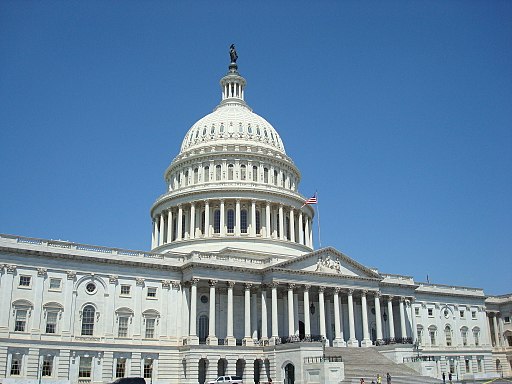 That is, there is no roll call record as to how each U.S. Representative voted.
That is, there is no roll call record as to how each U.S. Representative voted.
Voice votes are usually applied only to non-controversial matters, such as naming a post office. This dangerously bad high-level radioactive waste legislation should be among the most controversial bills Congress addresses.
DIA on Iran nuclear program
A Defense Intelligence Agency report made public this week concludes that Iran’s government remains prepared to pursue nuclear weapons and missiles to deliver them.
ARTICLE BY BILL GERTZ | thewashintontimes.com
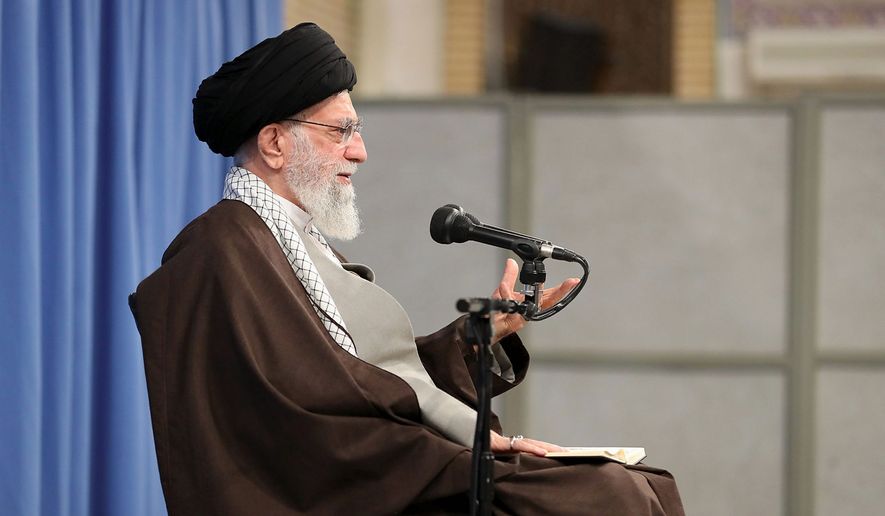
“Iran’s overarching strategic goals of enhancing its security, prestige, and regional influence have led it to pursue nuclear energy and the capability to build missile-deliverable nuclear weapons, if it chooses to do so,” says the report, “Iran Military Power.”
The report says Iran currently has no nuclear weapons and under the 2015 international nuclear deal agreed not to pursue nuclear arms. However, work by Tehran on space launcher vehicles indicates that Iran continues to develop long-range missiles that could be used for nuclear strikes.
While lacking intermediate-range and intercontinental-range missiles, “Tehran’s desire to have a strategic counter to the United States could drive it to develop and eventually field an ICBM,” the report said.
Plutonium Pit Production Workshop 11/19
https://www.facebook.com/NukeWatch.NM/videos/825812604488302/
[embeddoc url=”https://nukewatch.org/wp-content/uploads/2019/11/MK-11-19-19-Pu-Pits-W87-1.pptx” download=”all” viewer=”google”]
1:30PM TODAY on KTRC Talk Radio 1260 AM: Marylia Kelly of Tri Valley CARES
Tune in here ↓
FBI agent who raided Rocky Flats Plant to speak
Lipsky, who continues to raise concerns about the dangers of radioactive waste, will be in Santa Fe this week for a workshop organized by Nuclear Watch New Mexico, which opposes plans for pit production at Los Alamos National Laboratory. The event takes place Wednesday evening at the Mud Gallery.
ARTICLE BY: MARK OSWALD | abqjournal.com
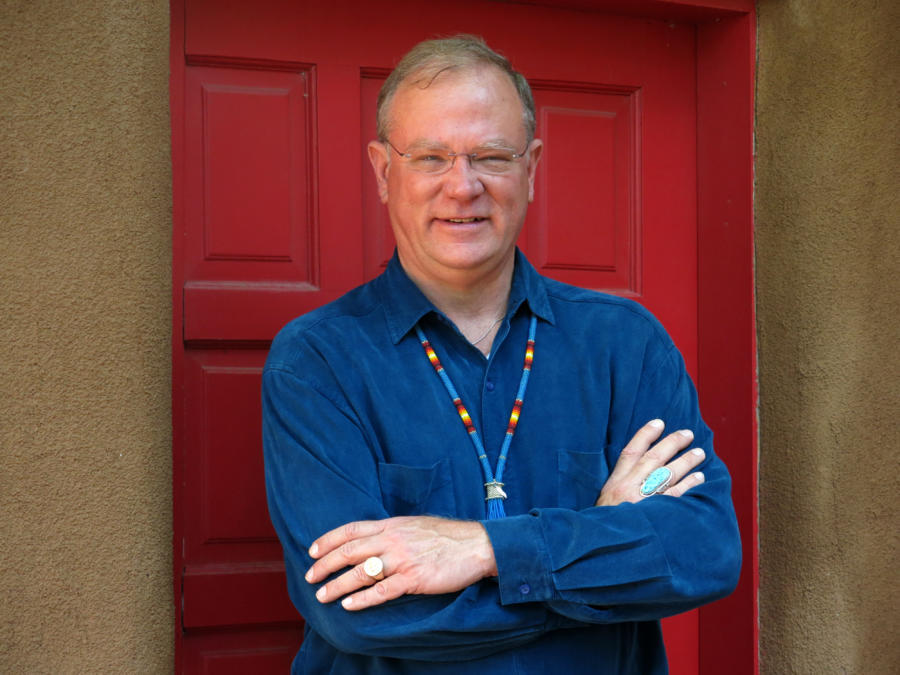
SANTA FE, N.M. — Jon Lipsky is a retired federal agent with a big notch in his gun – he shut down a plant that made plutonium parts for the nation’s nuclear weapons.In an episode unique in American history, in June 1989, Lipsky led the FBI’s raid on the U.S. Department of Energy’s Rocky Flats Plant in Colorado, where the cores of nuclear weapons, or “pits,” were made.
Later, under a plea deal, the private contractor that ran the plant for the DOE – Rockwell International – admitted to four felonies and six misdemeanors for environmental crimes and paid the government $18.5 million. The plant formally closed forever in 1992 and the U.S. has made only a handful of pits since.
3:00PM TODAY on KTRC Talk Radio 1260 AM: Jay Coghlan of Nuclear Watch New Mexico and Jon Lipsky, the FBI agent who led the 1989 raid investigating environmental crimes that shut down the Rocky Flats Nuclear Bomb Plant
Tune in here ↓
PODCAST: Living On The Edge November 14, 2019 – LANL & Plutonium
Scott Kovac of Nuclear Watch New Mexico and Jon Lipsky, the FBI agent who led the 1989 raid investigating environmental crimes that shut down the Rocky Flats Nuclear Bomb Plant join Xubi to talk about Nuclear weapons, Nuclear clean up and Pit production plans at LANL.
12 years and counting: Effort to lock Hanford’s radioactive waste in glass faces more delays
Feds aim to push back the opening of ‘glassification’ plants, while state officials say the Department of Energy has been underfunding the cleanup of America’s most poisoned site.
Already 12 years behind schedule, a project at the Hanford nuclear complex meant to transform millions of gallons of radioactive waste into benign glass faces yet another delay.
ARTICLE BY: JOHN STANG | crosscut.com
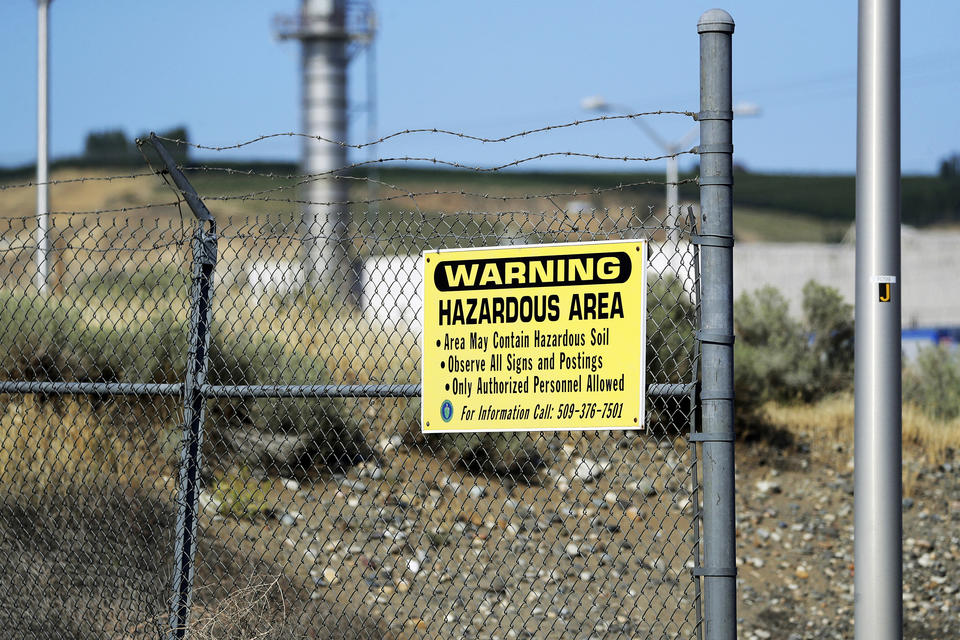
Since the 1990s, Washington state has been prodding the U.S. Department of Energy to build two “glassification” plants at Hanford that would permanently contain the waste stored in aging tanks on the site. Delays have added to the cost of the project, now estimated at $17 billion.
Glassification was supposed to begin in 2007. On the current schedule, lower-level radioactive waste wouldn’t be entombed in glass cylinders until 2023. And the high-level radioactive wastes? At present, glassification of that waste is set to begin in 2036, 29 years behind the original deadline.
The Energy Department wants to push that target back even further, and last month began negotiations with state leaders to do so. Those negotiations are also expected to address whether additional tanks must be built to hold the waste, a move the state supports, but which the DOE has been reluctant to adopt
“We want to try to come up with a schedule that doesn’t have to be revised every few years,” said Suzanne Dahl, section manager for tank waste management with the state Department of Ecology. Dahl noted that the longer the project takes, the more it will cost the federal government.
Located dead center in the 584-square-mile Hanford Nuclear Reservation is the most radiologically and chemically polluted spot in the Western Hemisphere. The site’s 177 underground tanks hold 56 million gallons of radioactive fluids, sludges and chunks, mixtures of roughly 100 different substances.
Nuclear watchers warn of pit production hazards, consequences during Aiken forum
The environmental disaster at the nixed Rocky Flats Plant in Colorado should be a red flag to those in the CSRA, watchdogs cautioned Tuesday, as the nation’s energy and defense departments consider establishing a new nuclear weapons mission at the sprawling Savannah River Site.
ARTICLE BY: COLIN DEMAREST | aikenstandard.com
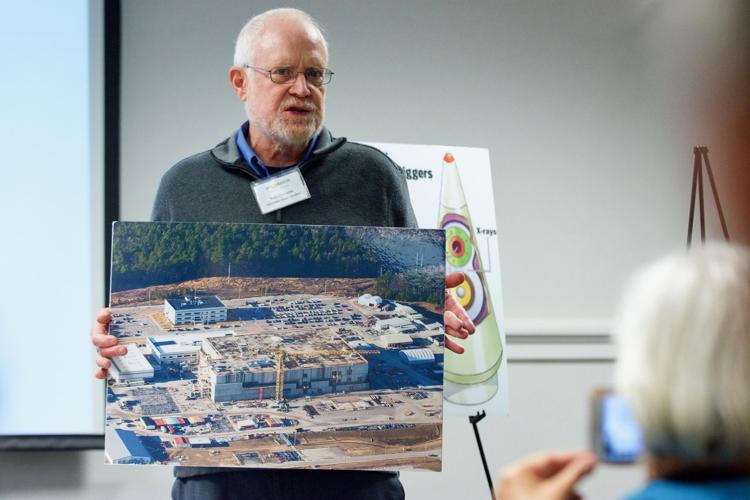
SRS Watch Director Tom Clements and representatives of the Rocky Mountain Peace and Justice Center in Colorado on Tuesday warned roughly two-dozen forum attendees of health and environmental repercussions that could come with a local plutonium pit production mission, as has been suggested.
The Rocky Flats Plant was the last place the federal government produced pits, nuclear weapon cores, en masse.
It was raided by the FBI decades ago following a clandestine investigation, was subsequently shuttered and then shoddily cleaned up, according to Pat Mellen, a Colorado-based attorney who spoke Tuesday.
“It was an absolute disaster,” Clements said of the Rocky Flats facility, which is near Denver. “Plutonium fires, releases, worker exposure, downwind exposure. We have been where you’re at right now, and we did it wrong,” Mellen said, speaking after the SRS Watch director. “We did it wrong at Rocky Flats.”
The Department of Defense and the National Nuclear Security Administration, part of the Department of Energy, in May 2018 recommended producing pits at the Savannah River Site, about 30 minutes south of Aiken.
While many local officials and lawmakers have welcomed the enduring mission, others, like Clements, have expressed repeated concerns.
“I used to tell students, ‘If you want to be protected from Rocky Flats, don’t breathe,'” said LeRoy Moore, another speaker at the Tuesday night event. That comment received some laughs.
The proposed production hub at SRS, a never-completed and repurposed Mixed Oxide Fuel Fabrication Facility, would be one prong in a two-pronged plan. Another 30 pits per year would be produced at Los Alamos National Laboratory in New Mexico, according to the recommendation.
Here’s how a CR could hurt America’s nuclear weapons modernization
“There could also be high-dollar costs. Responding to a lawsuit by environmental groups trying to halt the construction of the Y-12 facility in Tennessee, NNSA said a six- to 12-month delay in construction at that location could result in almost $1 billion in extra costs for taxpayers and the agency may have to lay off 1,000 construction personnel. Those numbers, first reported by the Exchange Monitor, likely have resonance with other potential delays at construction sites caused by a CR — meaning construction delays at one or more sites could quickly become costly for an agency whose facilities and construction needs have traditionally been underfunded.”
ARTICLE BY: AARON MEHTA | defensenews.com
WASHINGTON — A long-term continuing resolution will result in delays for modernizing America’s nuclear warheads, while putting at risk an already challenging plan to build plutonium pits needed for the next generation of U.S. intercontinental ballistic missiles, nuclear officials are warning.
The National Nuclear Security Administration is a semiautonomous agency under the Department of Energy that handles the manufacturing and maintenance of America’s nuclear warheads. Like other government agencies, NNSA would be limited to fiscal 2019 funding limits under a continuing resolution, and it would be unable to start new contracts.
The current continuing resolution, or CR, is set to end Nov. 21, but there is little expectation that regular budgeting will then resume. Congress is debating the merits of pushing the CR through December, but analysts are concerned the CR could extend into next year.
“We are in a situation right now where we have single-point failures throughout our enterprise,” Lisa Gordon-Hagerty, the NNSA administrator, said during a Defense Writers Group breakfast earlier this month. “It’s necessary for us, for the NNSA and for the nuclear security enterprise to receive consistent and robust funding to modernize our infrastructure as well as continue ongoing operations.”
“We’re looking at where we can move funding insofar as CRs will allow us to do so,” she added. “We’re working very closely with OMB and the administration to see what we can do to continue our important programs to modernize the infrastructure as well as the stockpile and our workforce initiatives and our endeavors.”
$1.5 MILLION IN NEW GRANTS TO STOP NUCLEAR THREATS
The Ploughshares Fund board of directors recently awarded grants to over 20 organizations
The Ploughshares Fund board of directors recently awarded $1.5 million in new grants to over 20 organizations working to end nuclear threats.
“These investments will develop new champions, provide vital research and empower American citizens to create a new vision for a saner nuclear policy,” said Ploughshares Fund President Joe Cirincione. “We have a balanced portfolio,” Cirincione explained, “The board invests in the best expert research, the most effective advocates, the clearest media messengers and, increasingly, in the new mass movements energizing public involvement on policy issues.”
For example, a new grant to National Security Action will allow that organization of former and future government officials to craft a new nuclear posture plan for the United States. To promote diplomacy and reduce the risk of war, the board gave a grant to the Quincy Institute for Responsible Statecraft to help launch this new institute and work on the threat of new wars in the Middle East and to promote diplomacy with North Korea. “We want to inject new ideas and proposals, providing political space to de-escalate current tensions and create viable diplomatic solutions,” said Director of Programs Michelle Dover.
EU Labors to Keep Nuclear Deal Alive After New Iran Moves
“It’s a great agreement and we need to keep it alive,” Slovakia’s foreign minister, Miroslav Lajcak, told reporters.
However, the Europeans are hardly surprised by Iran’s actions. They believe the writing has been on the wall ever since Trump withdrew from the nuclear agreement last year, claiming that it does not to stop Tehran from developing missiles or undermining stability in the Gulf region.
“Sadly, it’s a degradation that was to be expected,” Asselborn said.
ARTICLE BY: LORNE COOK | dailyinterlake.com

BRUSSELS (AP) — European Union foreign ministers on Monday affirmed their support for the nuclear deal with Iran, after the Islamic Republic began enrichment work at its Fordo site in a fresh act of defiance that seems likely to spell the end of the painstakingly crafted international agreement.
At talks in Brussels, the ministers mulled what action to take as they awaited a new report from the International Atomic Energy Agency later Monday on whether Iran is still complying with its commitments.
EU foreign policy chief Federica Mogherini said that the ministers underlined their “full commitment to the agreement that remains crucial for our security, even if it’s increasingly difficult to preserve it. We will continue our efforts to have a full implementation of the agreement.”
The EU powers that signed the 2015 Iran nuclear deal — Britain, France and Germany — were due to hold talks later Monday in Paris to discuss the next steps once the U.N.’s nuclear watchdog issues its latest findings.
A joint commission meeting of all the signatories is likely to be held in coming days.
One Year After Woolsey Fire, Federal Agencies Escalate Efforts to Abandon Cleanup of Contaminated Nuclear Site Where Fire Began
Boeing, Dept. of Energy and NASA push plans to renege on agreements to fully clean up the Santa Susana Field Lab, point of origin for Woolsey Fire
“Time and again, Boeing has cut corners on safety, whether on its airplanes or at SSFL, putting profits above all else.”
“The failure to clean up the site added insult to injury for people impacted by the fire.”
Contact: Denise Duffield, 310-339-9676 or dduffield@psr-la.org, Dan Hirsch, 831-336-8003 or dhirsch1@cruzio.com, Melissa Bumstead melissabumstead@sbcglobal.net | psr-la.org
One year after the devastating Woolsey Fire began at and burned most of the contaminated Santa Susana Field Laboratory (SSFL,) Boeing, the Department of Energy and NASA are pushing forward plans to abrogate cleanup agreements and leave most of the radioactive and chemical contamination on the site unremediated. SSFL is grossly polluted from decades of nuclear and rocket-engine testing activities including several accidents, spills, and intentional toxic releases.
On November 8, 2018, the Woolsey Fire ignited approximately 1,000 yards from the site of a partial nuclear meltdown of SSFL’s Sodium Reactor Experiment. The fire burned approximately 80% of the contaminated 2,850 acre facility before burning to Malibu, scorching nearly 97,000 acres, 1,643 structures, and prompting the evacuation of more than a quarter million people in one of Southern California’s worst wildfires to date. Three people lost their lives in the fire.
Why should anyone trust LANL on nuclear safety?
Ask the downwinders of nuclear weapons tests at the Marshal Islands and the Nevada Test Site whether the government should be trusted. Why should LANL be trusted, when it used to claim that groundwater contamination was impossible, but today we know it is contaminated with chromium, perchlorates, high explosives, etc.?
More recently, how can the public trust LANL when it sent an improperly prepared radioactive waste barrel that ruptured and closed the Waste Isolation Pilot Plant for three years, contaminating 21 workers with plutonium and costing the American taxpayer $3 billion to reopen?
November 5 This week features Princeton physicist Dr. Zia Mian, sitting down with Michelle Dover to discuss the India-Pakistan nuclear dyad and whether the global nuclear order is worth saving.
“Who decides how human society and human civilization conducts affairs,” Dr. Mian asked Dover. “Nine countries with nuclear weapons or everybody else?”
Before that, Esther Im from the National Committee on North Korea joins Michelle Dover and Akshai Vikram for the Early Warning news segment.
Listen, Subscribe and Share on iTunes · Spotify · SoundCloud · YouTube · Google Play · Sticher
Also available on ploughshares.org/pressthebutton
Gov. Gordon Open to Nuclear Waste Storage
Gov. Mark Gordon says he is open to Wyoming pursuing a nuclear waste storage facility though he doesn’t personally believe it’s the best industry for the state.
ARTICLE BY TOM COULTER | wyomingnews.com
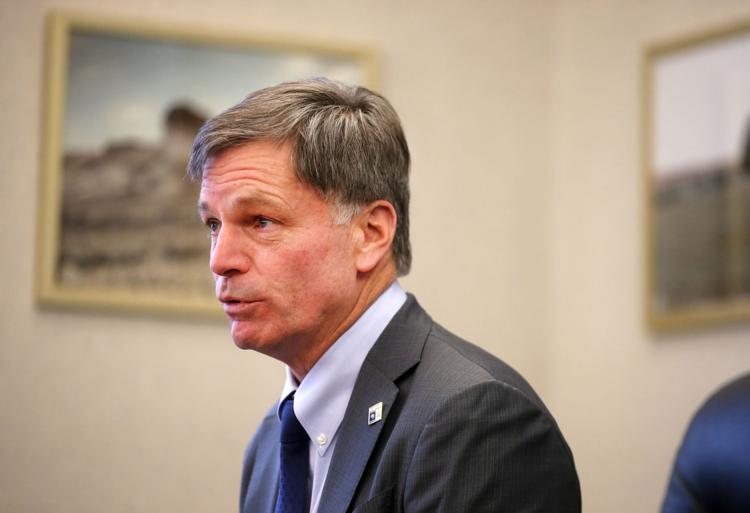
CHEYENNE – Gov. Mark Gordon said last week he could still be convinced to pursue a nuclear waste storage program that will be considered Tuesday in a legislative committee meeting.
During a meeting Monday with the Wyoming Tribune Eagle’s editorial board, Gordon said he would wait to see what the Wyoming Legislature finds in its studies.
“I don’t think it’s the best industry for Wyoming,” Gordon said. “But I would say this emphatically: If there is a good reason to do it, and we have adequate safeguards, though personally I may not feel it’s the best industry for Wyoming, I’m not going to stand in its way.”
During the second day of its meeting next week in Casper, the Legislature’s Joint Minerals, Business and Economic Development Interim Committee will consider a bill authorizing the governor to negotiate with the U.S. Department of Energy to store spent nuclear fuel rods within the state.
Russia says it’s already too late to replace new START treaty
Last Major Nuclear Arms Pact Could Expire With No Replacement, Russia Says
The treaty, disliked by President Trump, will run out in 14 months — and there is too little time to hammer out a new one, a Russian official said.
ARTICLE BY TOM BALMFORTH | reuters.com
MOSCOW (Reuters) – Russia said on Friday there was no longer enough time left for Moscow and Washington to negotiate a full-fledged replacement for the New START nuclear arms control treaty before it expires in February 2021.
The New START accord is the last major nuclear arms control treaty between the world’s two biggest nuclear powers and limits the number of strategic nuclear warheads they can deploy.
The fate of the accord has been in the spotlight since Washington in August pulled out of another landmark strategic arms accord, the Intermediate-Range Nuclear Forces Treaty (INF), citing violations by Russia that Moscow denies.
“It’s already obvious that with the time that is left… we will not be able to work out a full-fledged replacement document,” Vladimir Leontyev, a foreign ministry official, was quoted as saying by Interfax news agency.
The treaty can be extended by mutual agreement, but the prospect of that happening is unclear as Washington is not moving quickly and Moscow would need at least half a year to implement any extension agreement, Leontyev said. There was no immediate reaction from Washington to his comments.
The Possibility of Nuclear War Between India and Pakistan Is Greater Than Experts Would Prefer
ARTICLE BY KYLE MIZOKAMI | nationalinterest.org

Experts believe Pakistan’s nuclear stockpile is steadily growing. In 1998, the stockpile was estimated at five to twenty-five devices, depending on how much enriched uranium each bomb required. Today Pakistan is estimated to have an arsenal of 110 to 130 nuclear bombs. In 2015 the Carnegie Endowment for International Peace and the Stimson Center estimated Pakistan’s bomb-making capability at twenty devices annually, which on top of the existing stockpile meant Pakistan could quickly become the third-largest nuclear power in the world.
Pakistan and India are clearly in the midst of a nuclear arms race that could, in relative terms, lead to absurdly high nuclear stockpiles reminiscent of the Cold War. It is clear that an arms-control agreement for the subcontinent is desperately needed.
Iran launches more advanced machines to speed up nuclear enrichment: official
Tehran has rejected the Trump administration’s demand that a a new deal imposing stricter limits on its nuclear capacity as well as curbs on its ballistic missile programme and on its regional behaviour.
ARTICLE BY PARISA HAFEZI | reuters.com

DUBAI (Reuters) – Iran said on Monday it had launched a new batch of advanced centrifuges to accelerate uranium enrichment, further reducing compliance with the 2015 nuclear deal following the withdrawal of its arch-foe the United States. Iran has gradually shed commitments made under the deal with world powers since being hit with renewed U.S. sanctions that have crippled its oil exports. Germany said on Monday Iran’s announced roll-out of modernised centrifuges jeopardises the accord and called on Tehran to return to it.
Responding to Washington’s “maximum pressure” campaign, Iran has bypassed the restrictions of the deal step-by-step – including by breaching both its cap on stockpiled enriched uranium and on the level of enrichment.
Tehran, however, has left room for diplomacy by saying that talks are possible if Washington lifts all the sanctions and itself returns to the nuclear deal.
“If they (Washington) return to their commitments, we also will go back to our commitments,” Salehi said, adding that “Iran is ready to fully implement the deal if its rights are respected”.
What Does Science Say About the Need for Nuclear? Not Necessary.
ARTICLE BY JESSICA MCDONALD | factcheck.org
Ryan Jones, an expert in electricity systems and a co-founder of Evolved Energy Research, a consulting company that models low-carbon transitions, agreed. “Anyone who says that nuclear is 100% necessary on a technical basis, I would claim, just hasn’t looked at the alternatives in enough detail,” he said in an email.
Most experts FactCheck.org contacted, including those who think nuclear power should remain an option, said that from a technical perspective, nuclear is not needed to decarbonize the grid.
The Air Force Has Stopped Using 8-Inch Floppy Disks for Missile Command
The US nuclear forces’ Dr. Strangelove-era messaging system finally got rid of its floppy disks
BY: VALERIE INSINNA | c4isrnet.com
OFFUTT AIR FORCE BASE, Neb. — In 2014, “60 Minutes” made famous the 8-inch floppy disks used by one antiquated Air Force computer system that, in a crisis, could receive an order from the president to launch nuclear missiles from silos across the United States.

But no more. At long last, that system, the Strategic Automated Command and Control System or SACCS, has dumped the floppy disk, moving to a “highly secure solid state digital storage solution” this past June, said Lt. Col. Jason Rossi, commander of the Air Force’s 595th Strategic Communications Squadron.
The communication system which keeps the president in touch with the nuclear triad during a crisis will now be the responsibility of the head of U.S. Strategic Command.
Russia test-fires missile from new nuclear-powered submarine
Russia has successfully test-fired an intercontinental ballistic missile from its latest nuclear-powered submarine, the country’s defence ministry says.
BY: JONATHAN MARCUS | bbc.com
Footage captured overnight shows the release of the so-called Bulava missile from an underwater position in the White Sea, the ministry said.
It was fired from Russia’s new Prince Vladimir submarine and was reported to have travelled thousands of kilometres.
The submarine is expected to be operational by the end of the year.
Completed in the early hours of Thursday, the Bulava missile launch – the first of its kind from the Prince Vladimir – was one of many weapons tests expected to take place in the coming weeks.
Senate Dems likely to block defense spending in border wall dispute
ARTICLE BY JOE GOULD | defensenews.com
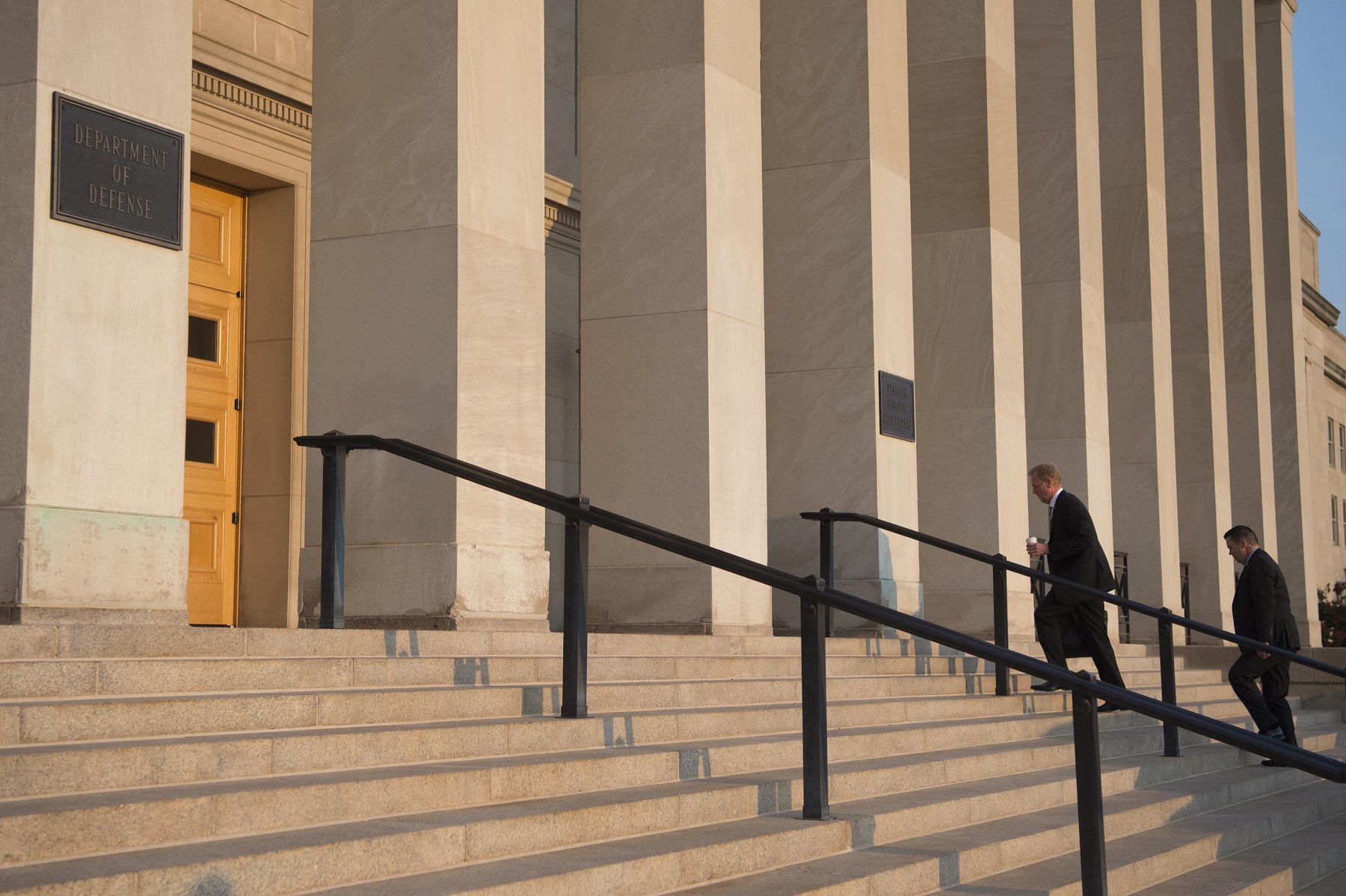
WASHINGTON ― Key Senate Democrats signaled Monday their caucus is likely to filibuster a proposed 2020 defense spending bill, which Senate Republican leaders plan to offer for a vote this week.In a Senate floor speech Monday, Majority Leader Mitch McConnell, R-Ky., dared Democrats to hold up the bill, accusing them of blocking a troop pay raise “for the sake of picking a fight with the White House,” even after the raid that killed Islamic State leader Abu Bakr al-Baghdadi.
October 29 This week on Press the Button: Chairman Adam Smith of the House Armed Services Committee. His remarks on the future of U.S. nuclear policy at the National Press Club last week made the news when he said that it was very unlikely major policy provisions would survive conference, particularly on the new, more usable nuclear weapon.
Hear his comments directly in a special edition of Press the Button called “The Chairman’s Choice.”
Geoff Wilson of Council for a Livable World discusses this surprise development with Michelle Dover and Mary Kaszynski of Ploughshares Fund on Early Warning.
Listen, Subscribe and Share on iTunes · Spotify · SoundCloud · YouTube · Google Play · Sticher
Also available on ploughshares.org/pressthebutton
The most radioactive state
Who will be the ultimate bearer of the nation’s nuclear waste?
In Mashable’s series Wasted, reporters dig into the myriad ways we’re trashing our planet. Because it’s time to sober up.
WRITTEN BY MARK KAUFMAN | .Jun 26, 2021 mashable.com
Of all the states in the union, and to the certain dismay of many local residents, New Mexico presently has the potential to become the future bearer of more and more of the nation’s nuclear excesses.
Though New Mexico will resist, and may prevail. “Folks in New Mexico are not going to take it,” said Albuquerque resident Don Hancock, who is the director of the Nuclear Waste Safety program at the Southwest Research and Information Center, an advocacy group focused on environmental and social justice. “We’ll stop this.”
“New Mexicans should not have to tolerate this risk.”
A SKINNY NDAA
Top Armed Services leaders in both houses of Congress are considering passing a slimmed-down National Defense Authorization Act that defers controversial measures for the sake of getting something passed, our colleague Connor O’Brien writes.
“It’s amounted to a backup plan,” House Armed Services Chairman Adam Smith (D-Wash.) told POLITICO, referring to the “skinny NDAA.” “It’s amounted to, we’re going to keep working on the bill itself, try to get resolved the top drawer issue of the [border] wall and we’ll have this as a backup discussion if necessary. I don’t have a problem with that.”
CHECKING TRUMP: More than 40 advocacy groups are out with a letter calling on lawmakers to oppose a final defense bill that doesn’t include the “core progressive priorities” aimed at constraining the Trump administration in the House-passed bill. That includes provisions to limit Trump’s Iran war powers, end U.S. support to the Saudi-UAE coalition in Yemen, bar new detainees at Guantanamo Bay, protect transgender troops and block deployment of new low-yield nuclear warheads.
October 22 Congressman Gerry Connolly (D-VA) gives us an insider view of the impeachment crisis and its impact on US foreign policy. Connolly serves on the Foreign Affairs and the Oversight Committees, both charged with the impeachment inquiry.
Early Warning features Joe Cirincione and Elizabeth Beavers discussing the Turkish president’s recent comments on nuclear weapons, and why we should keep the Open Skies Treaty. Joe Cirincione answers a question from Alec in Louisiana.
Listen, Subscribe and Share on iTunes · Spotify · SoundCloud · YouTube · Google Play · Sticher
Also available on ploughshares.org/pressthebutton
 Calling the National Nuclear Security Administration's latest Record of Decision (Federal Register, October 4, 2019) for the Continued Operation of the Y-12 National Security Complex , "an obvious attempt by the government to deliberately circumvent this Court's ruling," the Oak Ridge Environmental Peace Alliance, Nuclear Watch New Mexico, the Natural Resources Defense Council and four individual co-plaintiffs today filed a Motion to Enforce the judgment handed down in federal court in September by Chief United States District Judge Pamela Reeves.
Calling the National Nuclear Security Administration's latest Record of Decision (Federal Register, October 4, 2019) for the Continued Operation of the Y-12 National Security Complex , "an obvious attempt by the government to deliberately circumvent this Court's ruling," the Oak Ridge Environmental Peace Alliance, Nuclear Watch New Mexico, the Natural Resources Defense Council and four individual co-plaintiffs today filed a Motion to Enforce the judgment handed down in federal court in September by Chief United States District Judge Pamela Reeves.
"Within hours of the Judge's September ruling, NNSA told reporters that it would keep right on doing what it was doing, including building the UPF bomb plant. Then they published the new Record of Decision which is a direct challenge to the Court—it says they have decided they will comply with the Court's order at some uncertain date in the future, and in the meantime, it's business as usual. We went to court in the first place, because 'business as usual' was violating the law." — OREPA coordinator Ralph Hutchison
Erdogan’s Ambitions Go Beyond Syria. He Says He Wants Nuclear Weapons.
“There are approximately 50 US nuclear weapons, stored on Turkish soil. The United States had never openly acknowledged its existence, until Wednesday, when Trump did exactly that. When asked about the safety of these weapons, stored in a bunker controlled by the Americans at Incirlik Air Base, Mr. Trump said, “We have confidence and we have a large air base there, a very powerful air base.” But not everyone is so confident, because the air base belongs to the Turkish government. If relations with Turkey deteriorate, US access to that base is not guaranteed.”
ARTICLE BY DAVID E. SANGER & WILLIAM J. BROAD | nytimes.com
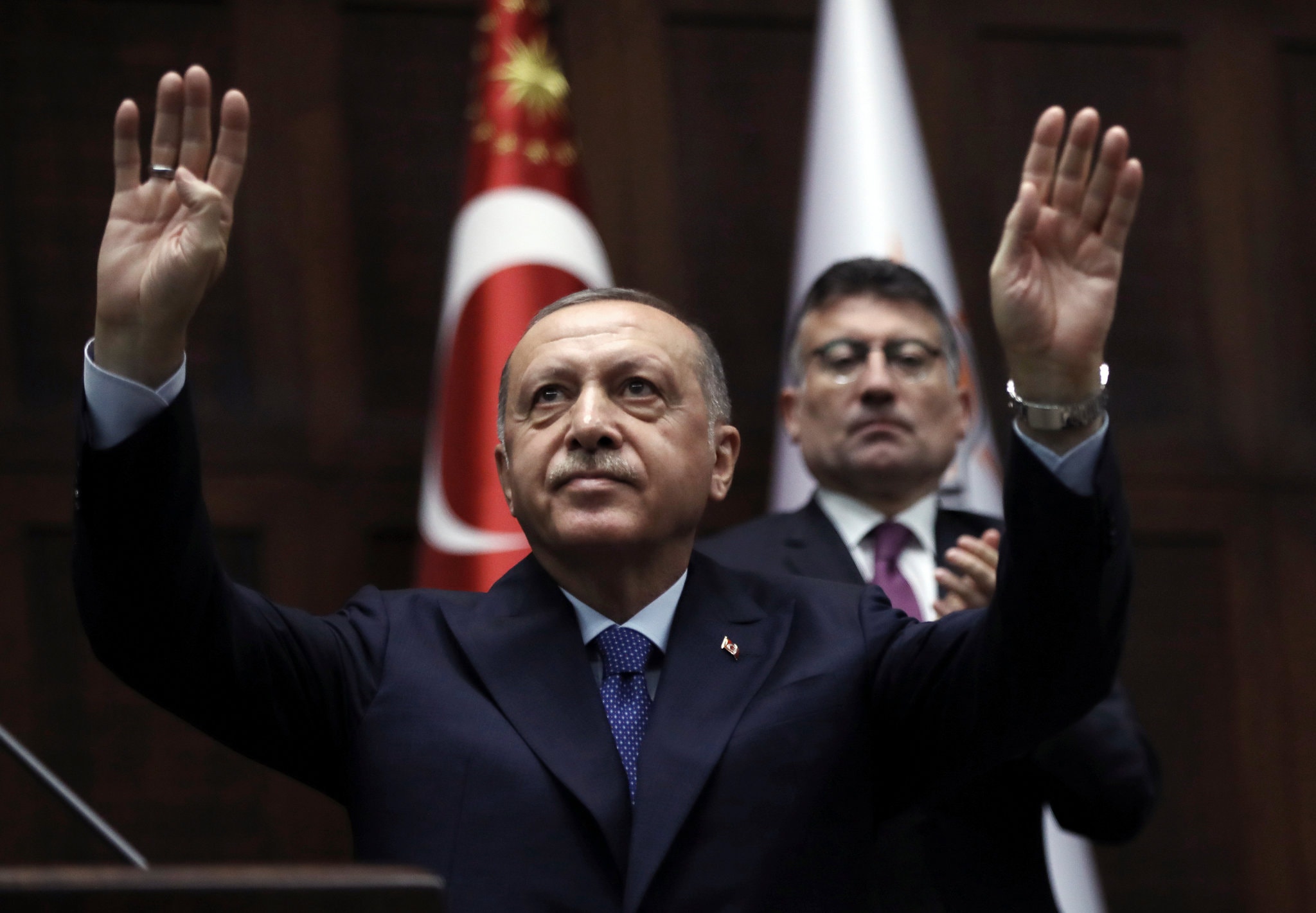
Erdogan is playing before an anti-American domestic audience with his nuclear rhetoric, but he is very unlikely to look for nuclear weapons,,quot; said Jessica C. Varnum, an expert in Turkey at the James Martin Center for Nonproliferation Studies in Middlebury in Monterey, California, “There would be huge economic and reputational costs for Turkey, which would damage the pockets of Erdogan voters.”
A Cheaper Nuclear Sponge
“With today’s technology, land-based [ballistic] missiles are an embarrassment,” the late, great strategist Thomas Schelling wrote in 1987. The weapons, he added, “seem to give the entire deterrent a bad name.”
ARTICLE BY STEVE FETTER & KINGSTON REIF | warontherocks.com
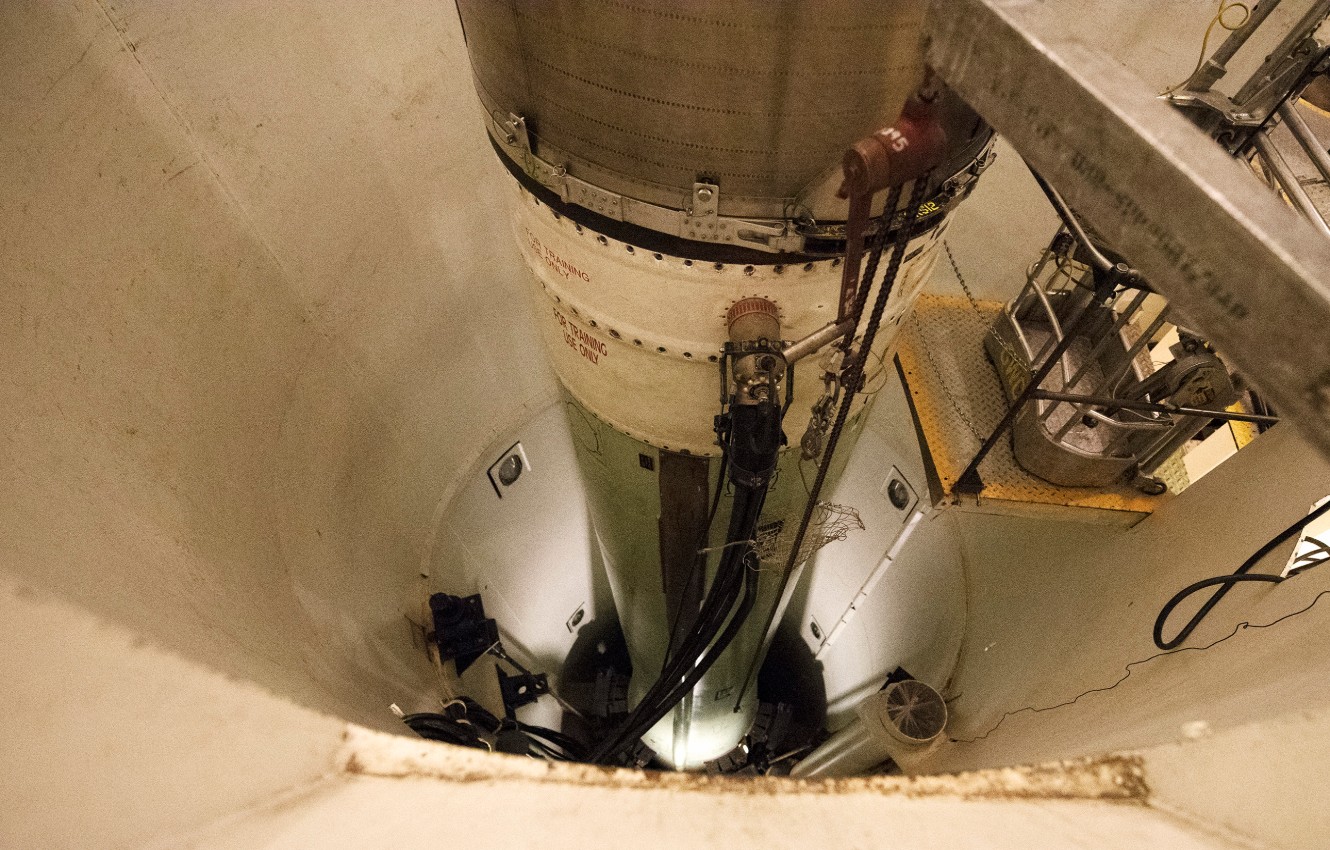
Schelling was right: Intercontinental ballistic missiles (ICBMs) are by far the least valuable leg of the so-called nuclear triad, which also consists of submarine-launched ballistic missiles, and air-delivered cruise missiles and gravity bombs.
So long as U.S. adversaries possess nuclear weapons, we believe the United States should maintain a safe, secure, and effective nuclear arsenal to deter nuclear attacks against itself and its allies. But the Trump administration’s approach to sustaining and upgrading the arsenal is unnecessary, unsustainable, and unsafe. Nowhere is this more evident than with respect to its plan to build a new ICBM.
Instead of proceeding with current plans to build an entirely new ICBM system at a cost that is likely to exceed $100 billion, the Pentagon could save scores of billions — without sacrificing U.S. security — by continuing to rely on a smaller number of existing Minuteman III missiles.
Trump administration talking tough about another government shutdown for border wall funding
On Thursday, the Senate failed a veto override on Donald Trump’s emergency declaration, which is being used to purloin funds appropriated for other programs and use them for his border wall. That sets up yet another budget fight that will simmer along between the House, Senate, and White House for the next month. It also sets up another fight over a Trump government shutdown.
ARTICLE BY JOAN MCCARTER | dailykos.com
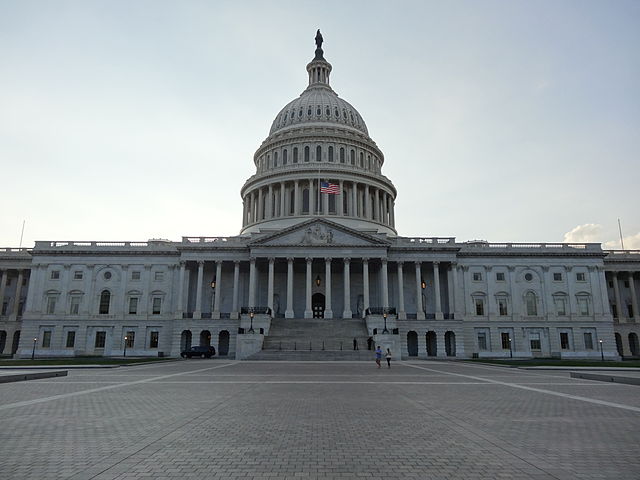 Before the August recess, all parties agreed to a continuing resolution to fund the government until the week before Thanksgiving, in anticipation that all the individual spending bills for all the departments would be passed and signed by then. What it really set up was another fight with Trump. “Trump is not interested in signing other domestic spending bills until there is agreement on the border wall,” a senior administration official told The Washington Post.
Before the August recess, all parties agreed to a continuing resolution to fund the government until the week before Thanksgiving, in anticipation that all the individual spending bills for all the departments would be passed and signed by then. What it really set up was another fight with Trump. “Trump is not interested in signing other domestic spending bills until there is agreement on the border wall,” a senior administration official told The Washington Post.
Feds give Navajo uranium contract to firm with sketchy past
A High Country News investigation finds the EPA awarded Tetra Tech a contract despite knowing its subsidiary had likely engaged in data manipulation, false reporting and profiteering.
ARTICLE BY SUSIE NIELSEN | hcn.org
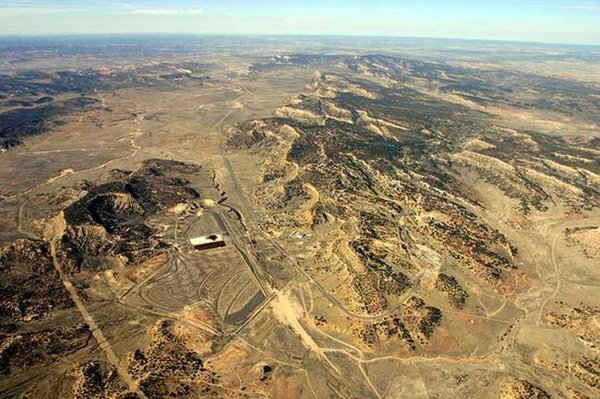
In September 2017, the Environmental Protection Agency received a troubling message from the Navy: Tetra Tech EC, the firm tasked with cleaning up the radioactive former naval shipyard Hunters Point in San Francisco, might have manipulated its data.
The past performance of Tetra Tech, even beyond its subsidiary at Hunters Point, has been marked by controversy. The parent company has been at the center of other lawsuits, including a consolidated case regarding its involvement in cleaning up after the North Bay Fires, a series of wildfires that devastated regions north of San Francisco in the fall of 2017.
“The Navajo Nation project is a bull’s-eye radioactive project with dangerous radioactivity. For Tetra Tech to get that project at all — to be even allowed to bid on it — is shocking.” – David Anton, attorney for the Tetra Tech EC whistleblowers
In 2008, the EPA and five other federal agencies, in consultation with Navajo Nation, developed the first comprehensive plan to address the legacy of uranium contamination in and around the Navajo Nation. As of 2014, of the 43 highest-priority Navajo Nation mines as designated by the EPA, only one of them — the Skyline Mine — had been mostly cleaned up.
Nuclear News Archives – 2021
Nothing Found
It seems we can’t find what you’re looking for. Perhaps searching can help.


